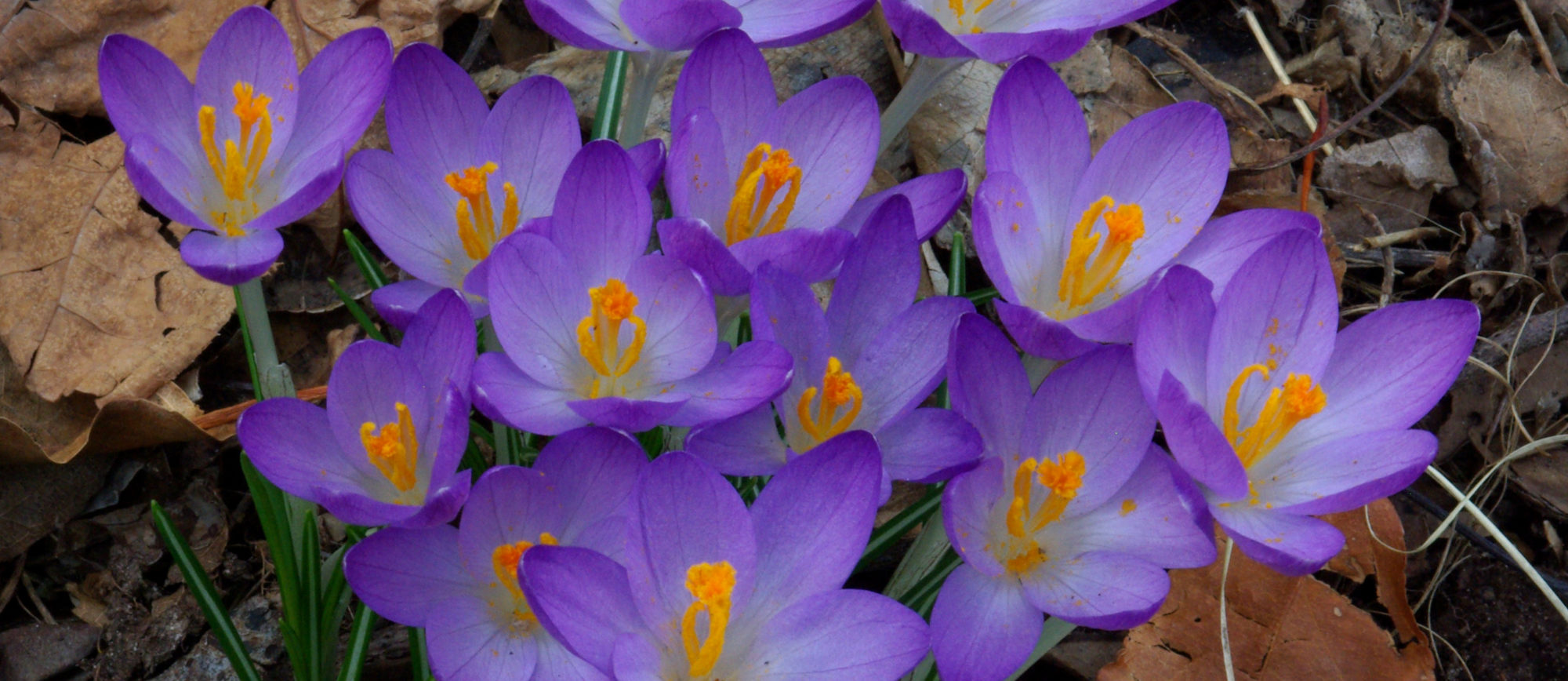Oregon
117 specimens
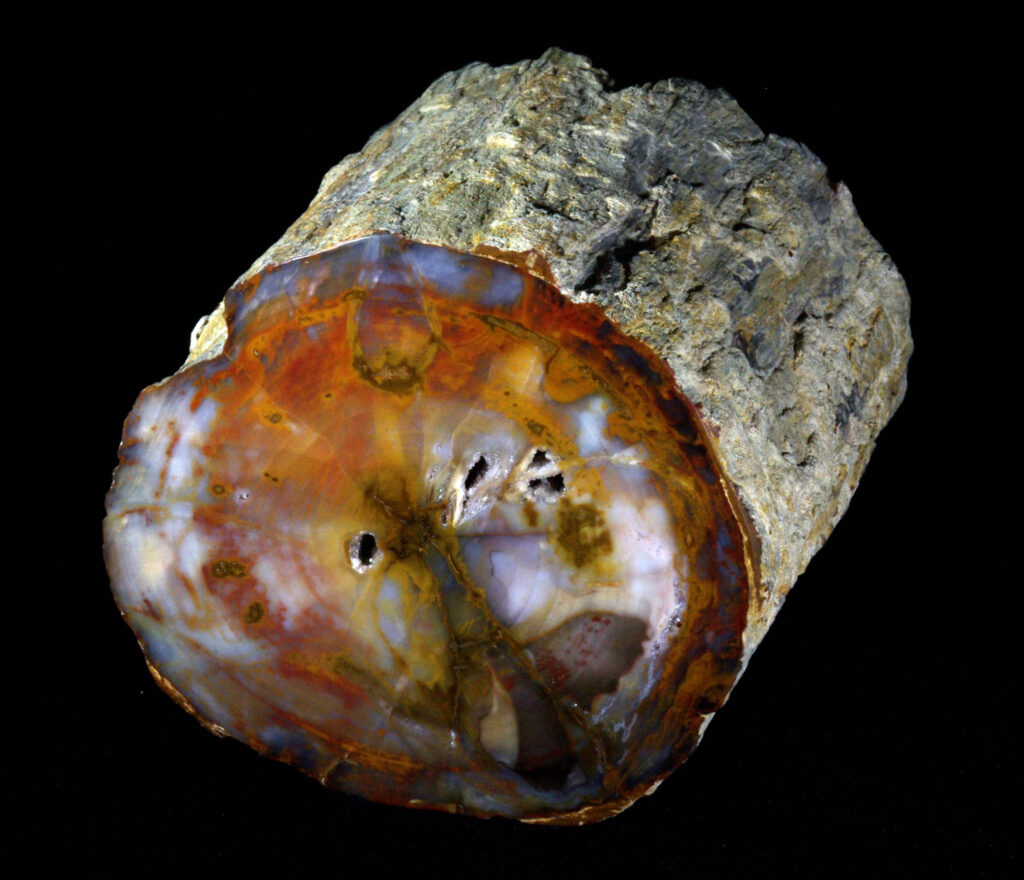
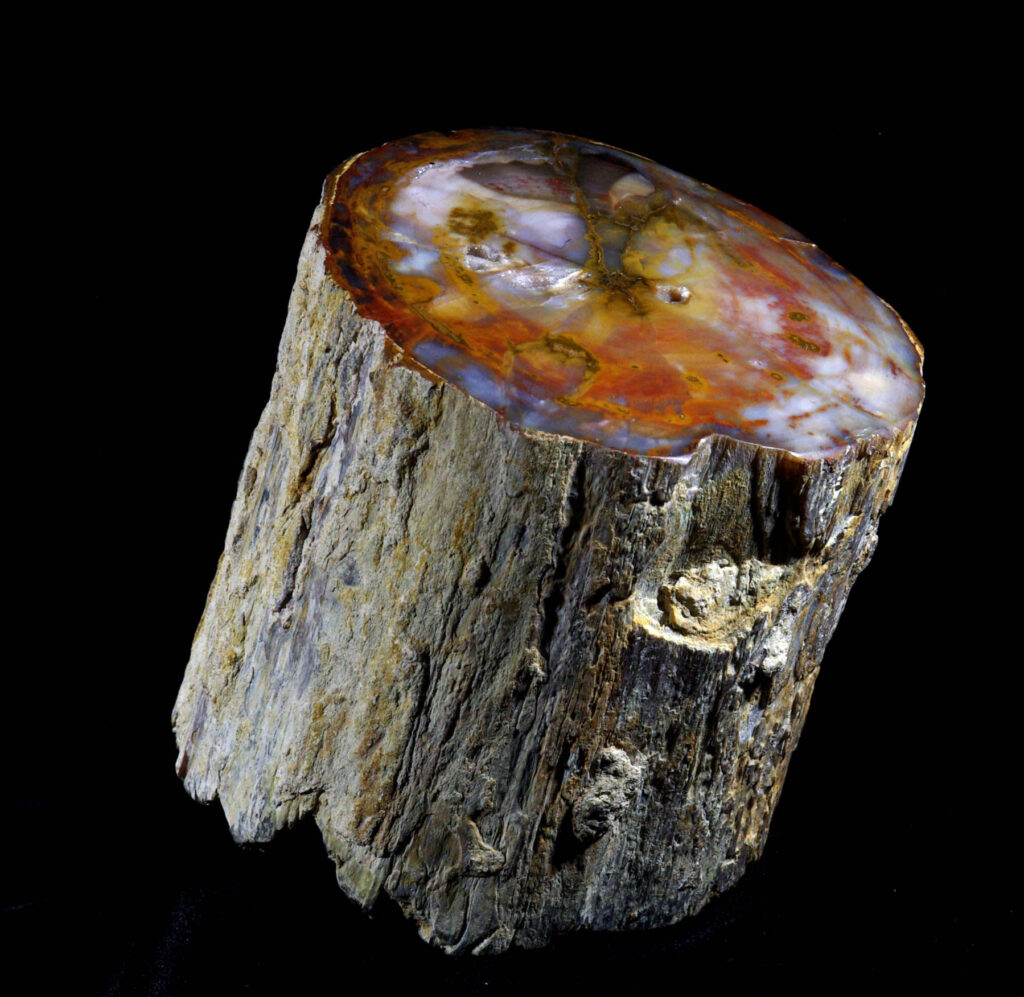
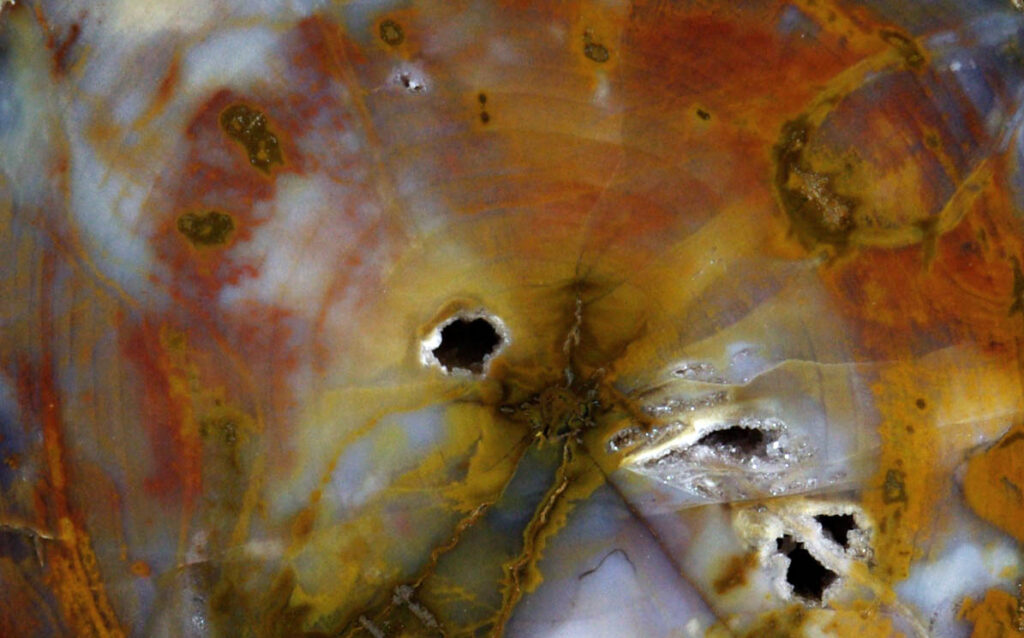
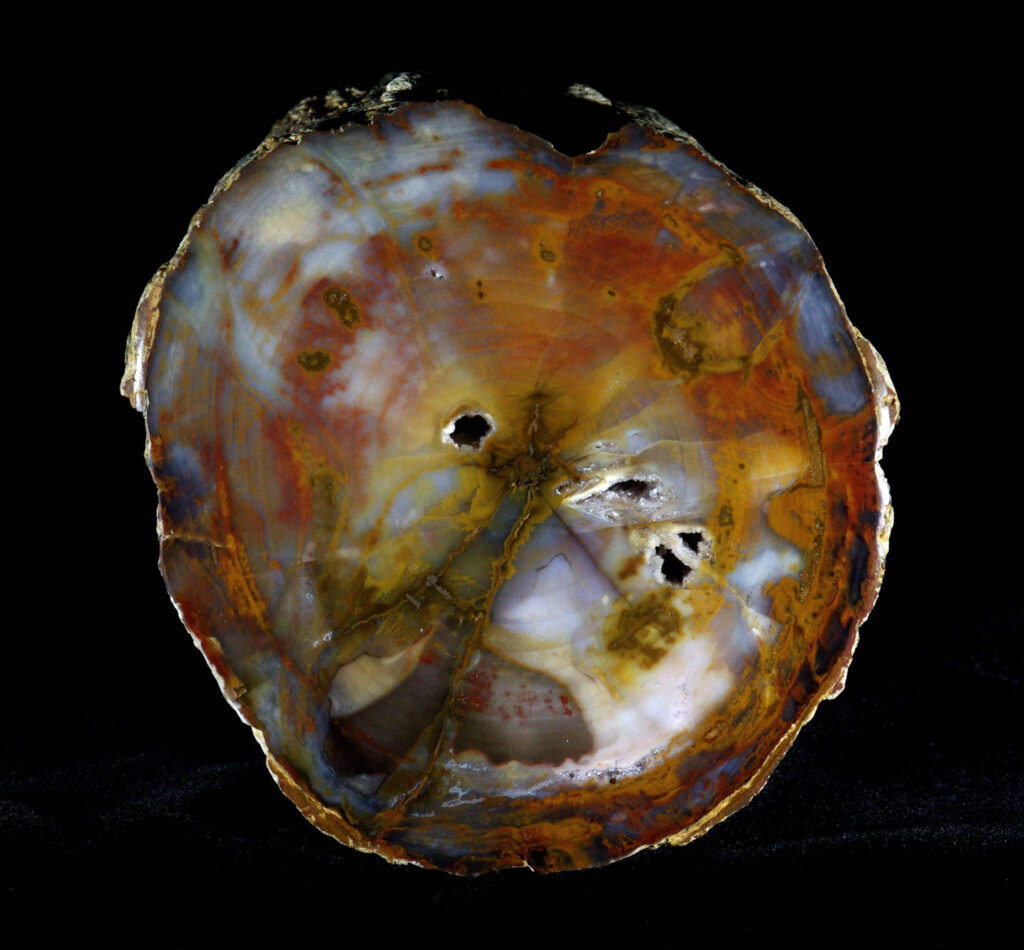
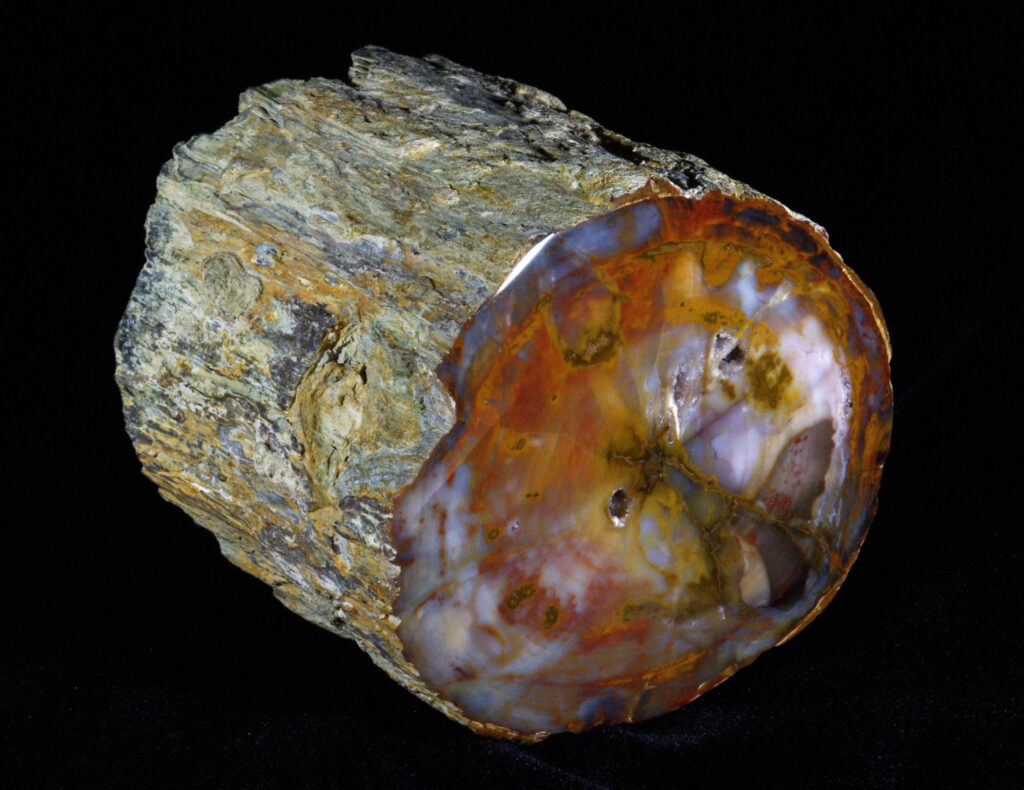
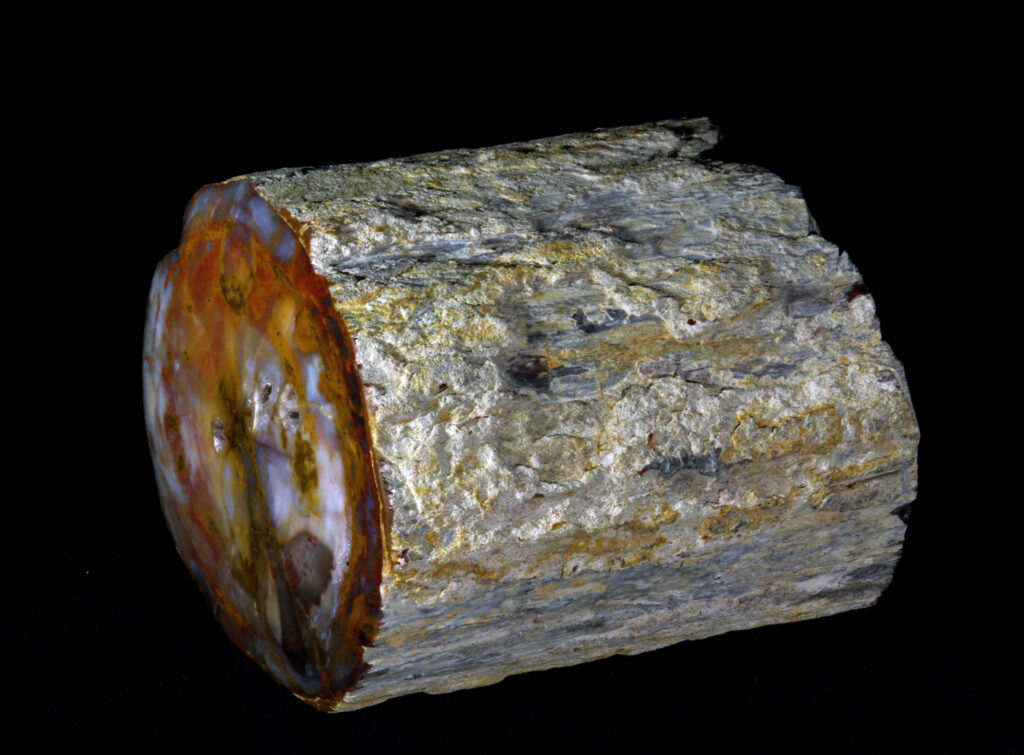
1. The Princess of Grassy Mountain. Grassy Mountain. Malheur County, OR. Succor Creek Formation. Miocene. Diffuse-porous hardwood with prominent rays (beech-like). Full round log section – one natural end. Everything one could want in a fossil wood specimen. Absolutely glamorous and remarkably perfect. Solid glassy agate/calcedony. Incredibly beautiful under magnification. The face has a master polish by a master jeweler, a slight dome with an amazing polish. No fillers/No glue. Museum-size piece with a 12 by 12 cm mirror-polished face; 14 cm long; seven pounds and twelve ounces.
I can say something similar to this about every specimen in this collection: Consider how many trillion trees over the course of hundreds of millions of years grew, thrived, and toppled on this blue planet of ours. Next consider the rare convergence of geologic, biologic, mineralogic, atmospheric, and other conditions that enabled a portion of one of those trees to be quickly covered by enough ash or mud flows to stop anaerobic bacteria from eating it in a silica rich environment with the perfect chemical balance of siliceous acid gels and catalysts to penetrate cells and template them with a rock-hard form of silica that just happens to also be mineral-rich enough to display brilliant colors and translucence at frequencies intended for the human eye, and also happen to have avoided destruction from shifting tectonic plates, raising mountain ranges, and wind whipped oceans and seas, while always recycling portions of earth’s crust into magma to keep the process going. An infinitesimal number of all trees from all time are this quality.
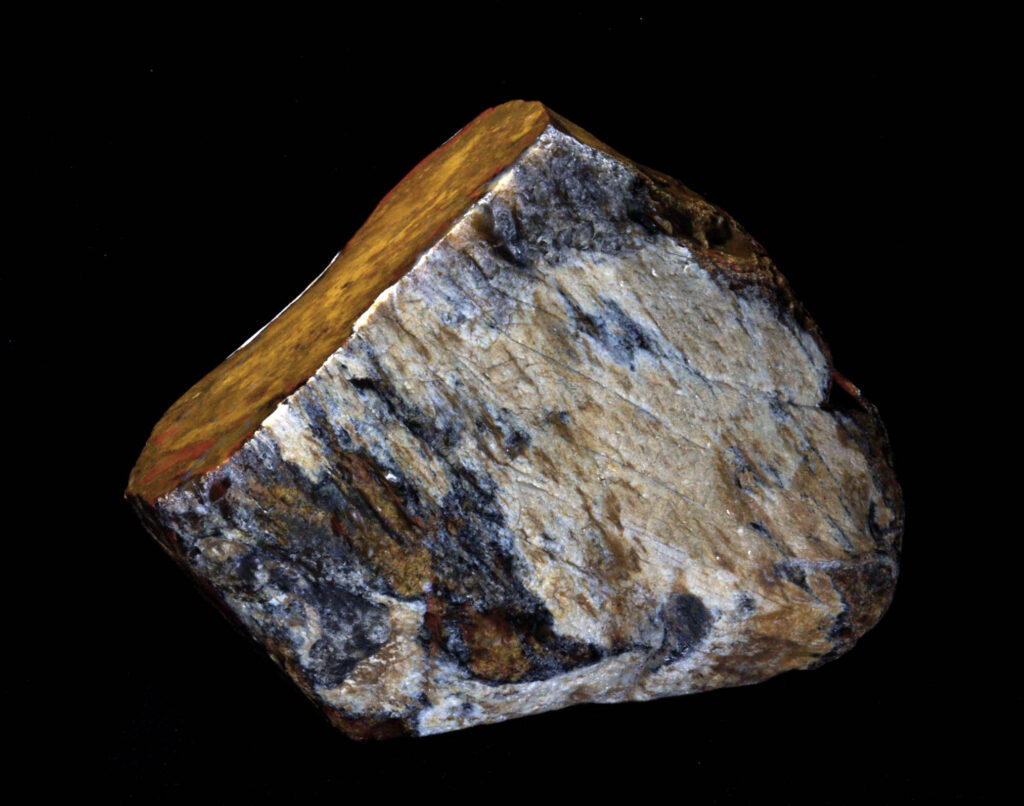
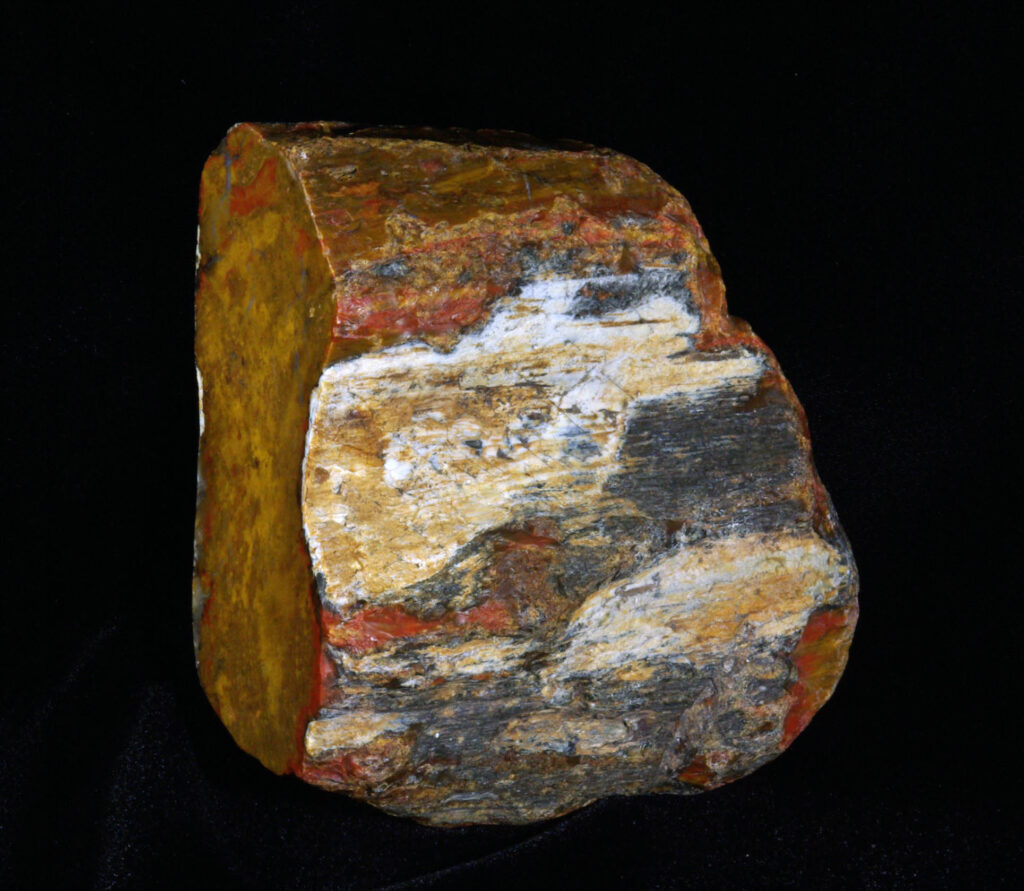
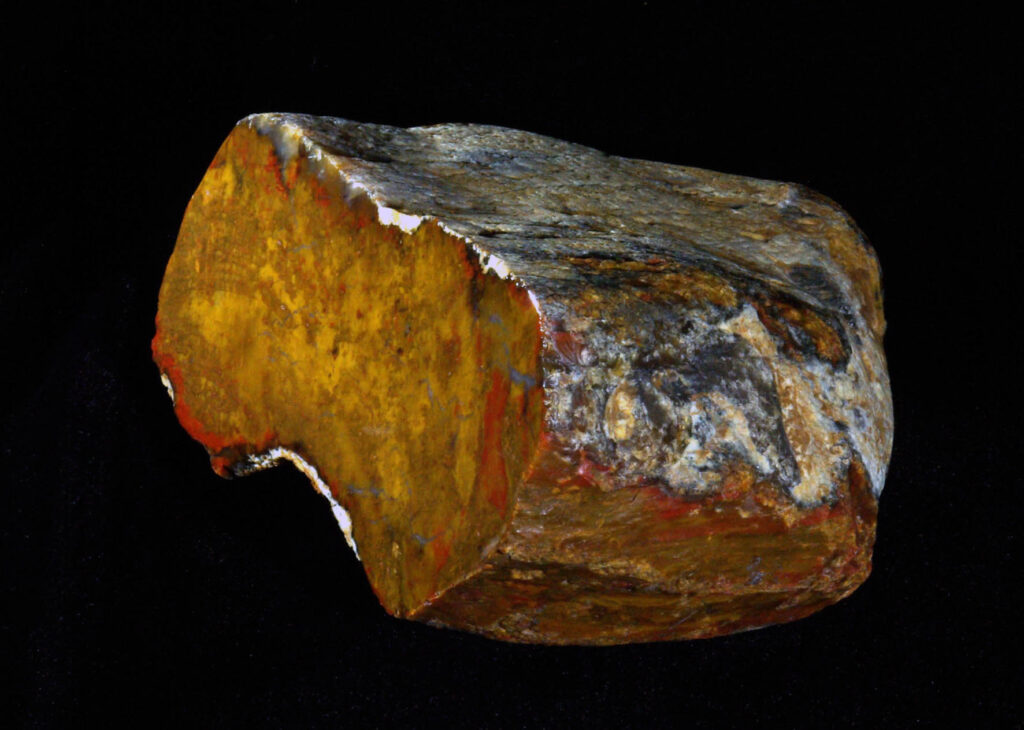
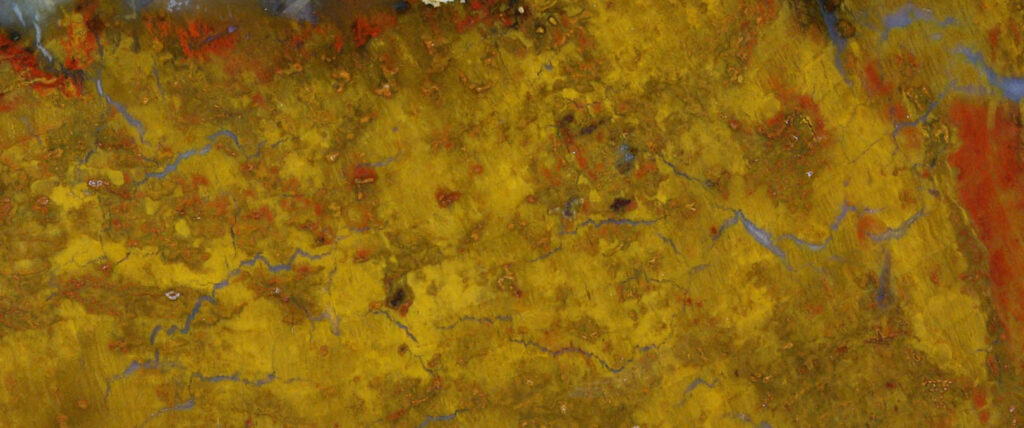
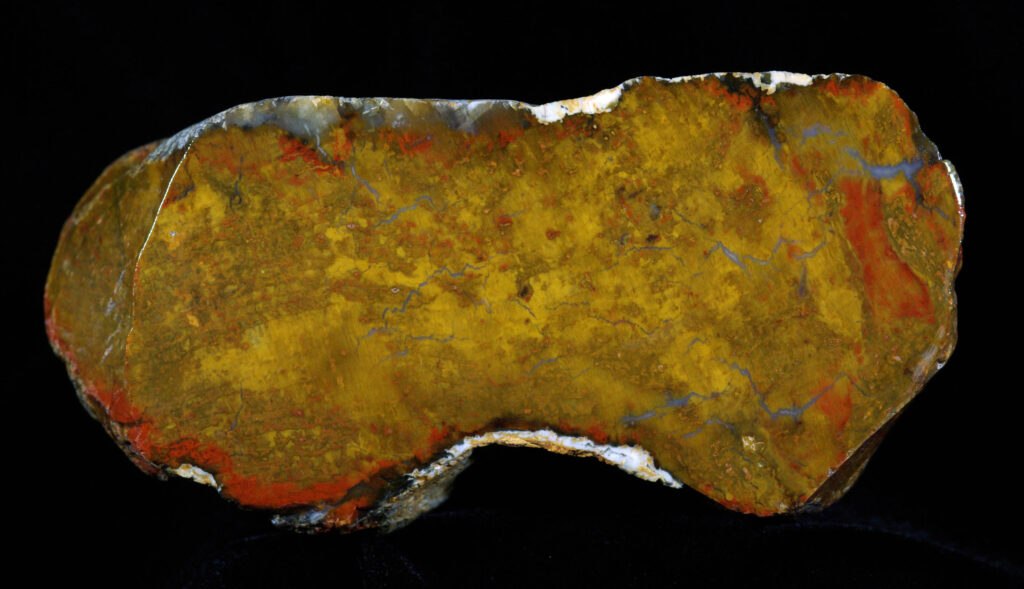
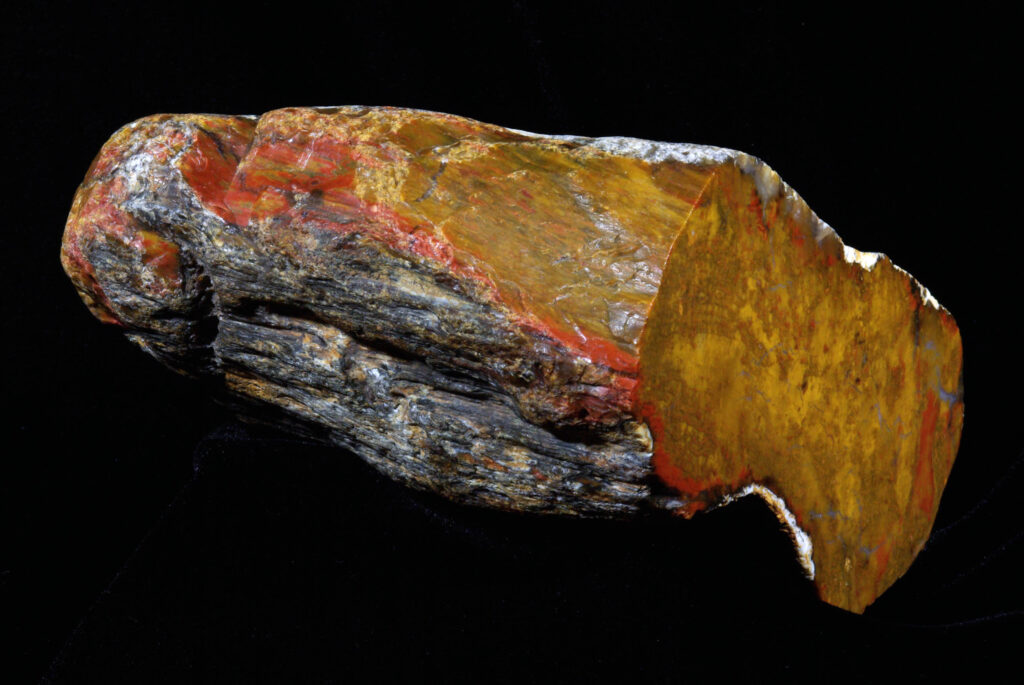
2 a. Oregon (colors evoke Malheur County). River run specimen round. Conifer. One natural end. Rugged and solid glassy agate/calcedony. Solid and attractive. No fillers/No glue. Museum-size piece with a 13 by 6 cm mirror-polished face; 14 cm long; four pounds and ten ounces.
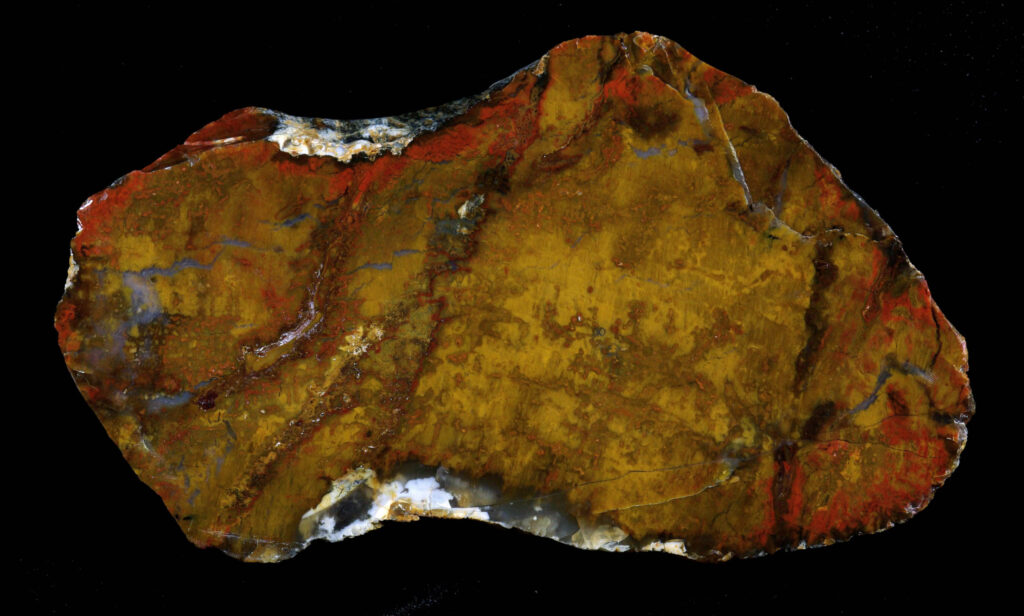
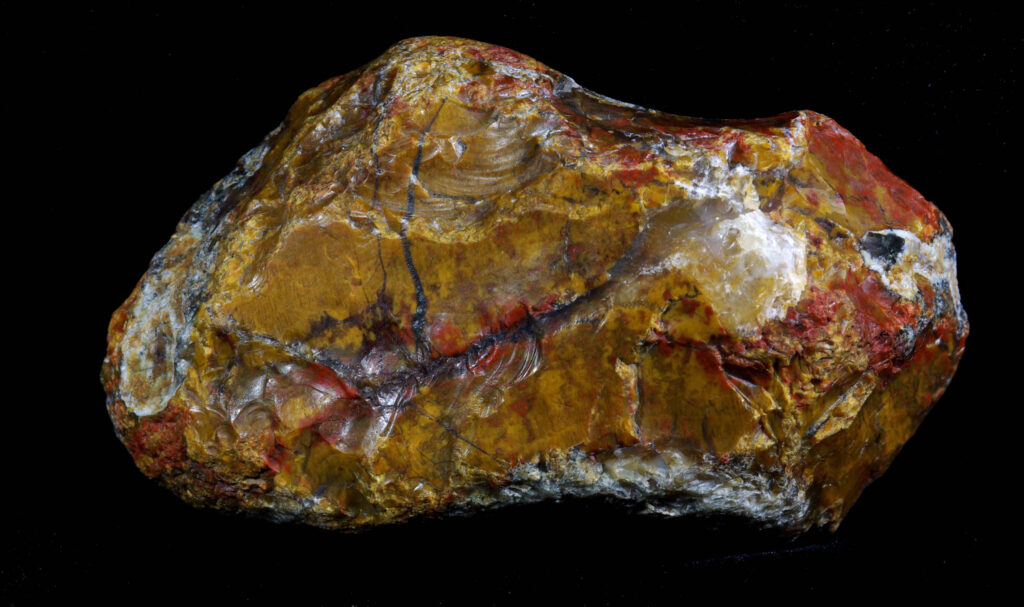
2 b. Oregon – other end of log above – River run specimen round. Conifer. One natural end. Rugged and solid glassy agate/calcedony. Solid and attractive. No fillers/No glue. 12 by 6 cm mirror-polished face; 4 cm thick; one pound and two ounces.
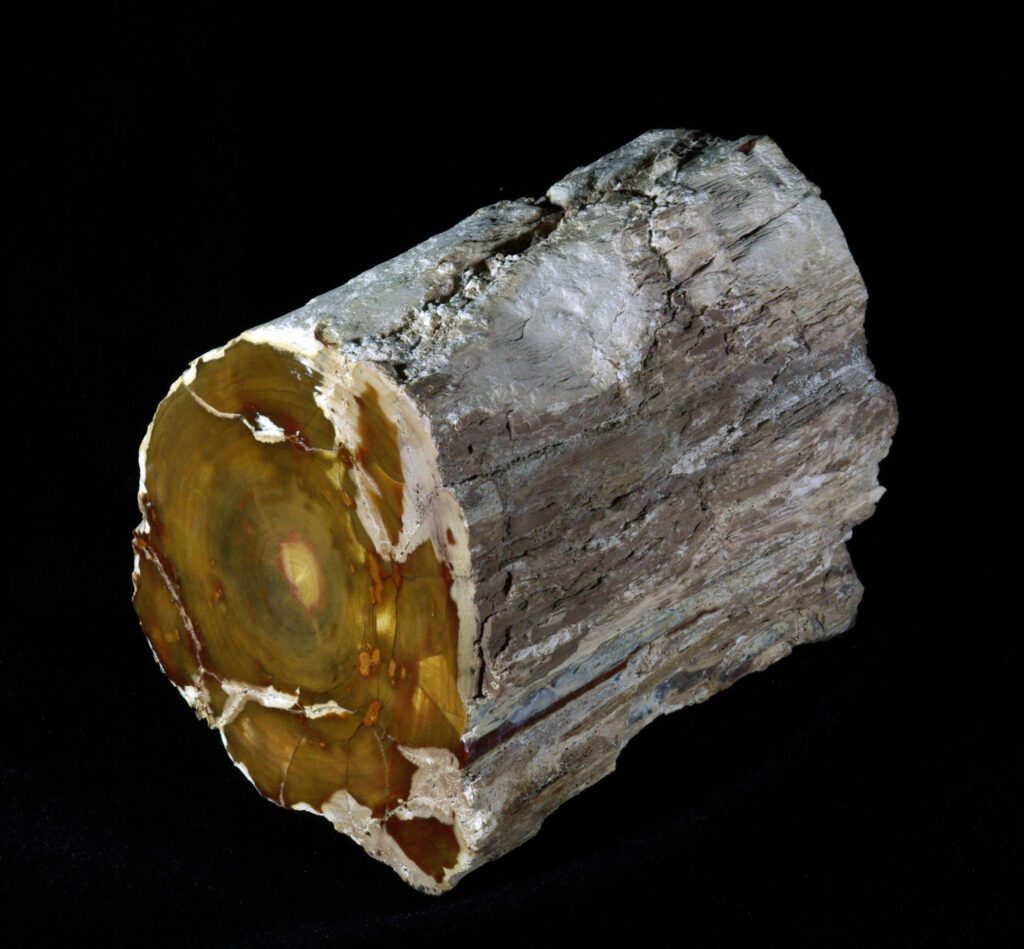
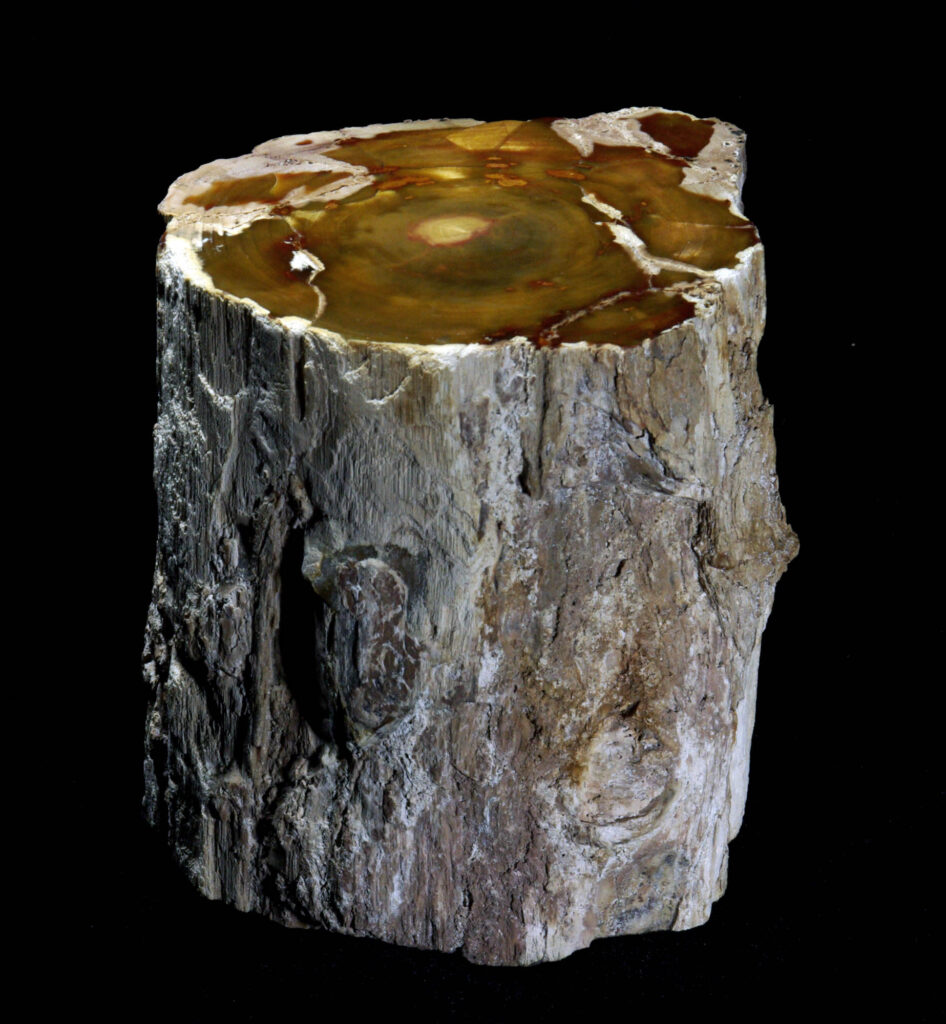
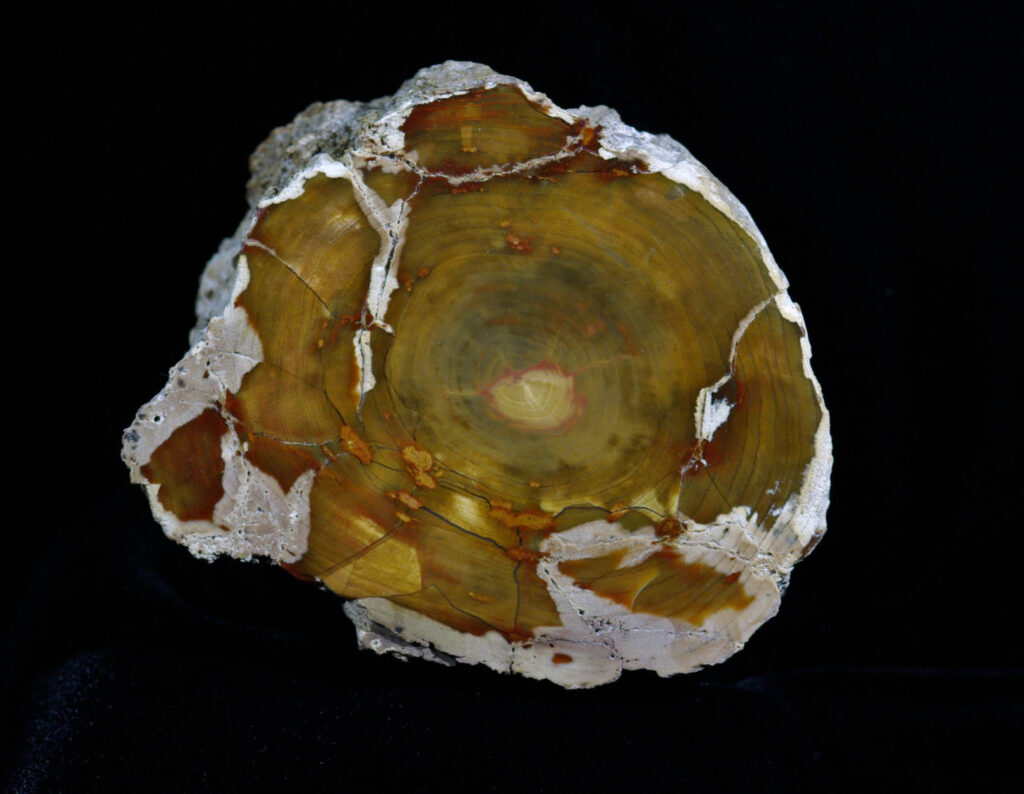
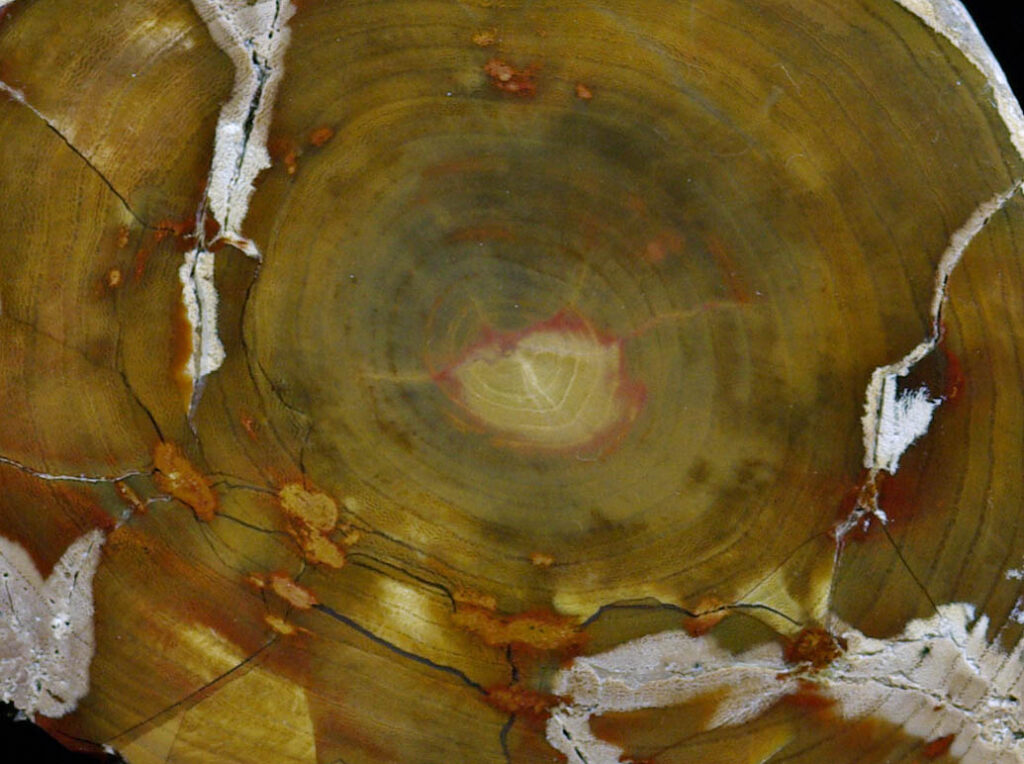
3. HooDoo Basin, Malheur County. Succor Creek Formation. Miocene. Elm from HooDoo Basin (the rockhound name for an elusive locality adjacent to the Grassy Mountain wood locality). Glassy yet more opaque than Grassy Mountain wood with a shifted color palate. Fairly large full round log section, is cut on both ends and polished on the top. Beautiful growth rings and colors you see in this combination and hue only in HooDoo wood. Excellent cell preservation. Figures in Ancient Forests. No filler/No glue. 80 by 98 cm mirror polished face and 10.5 cm long; three pounds and one ounce.
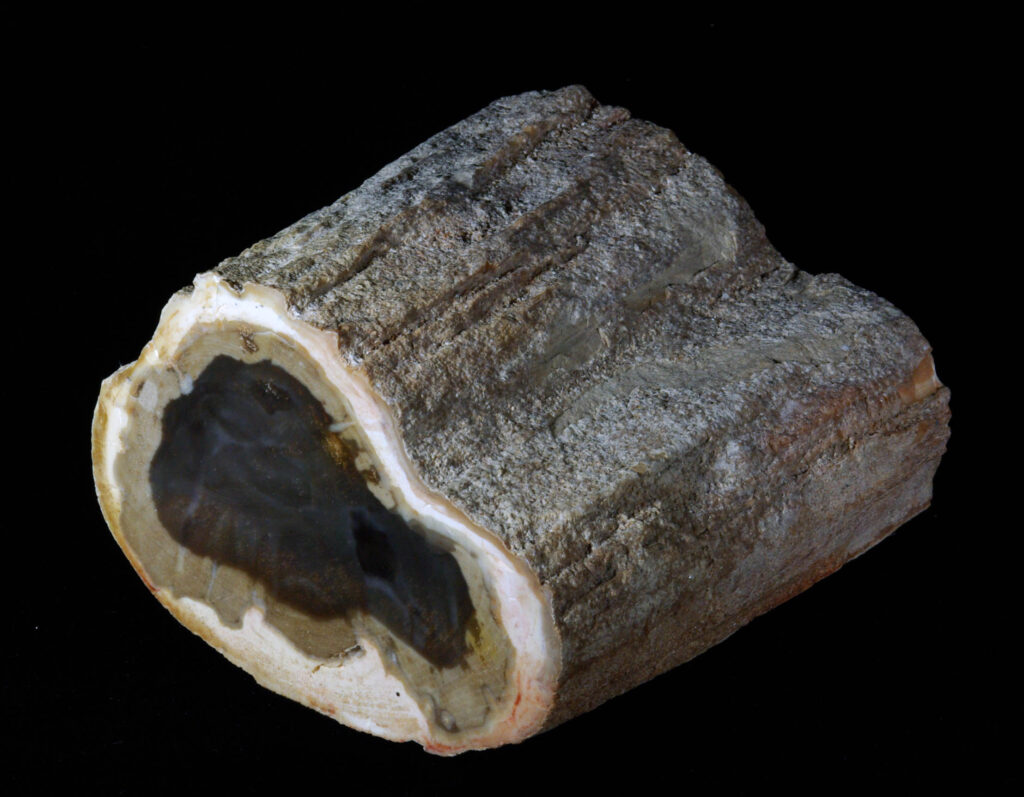

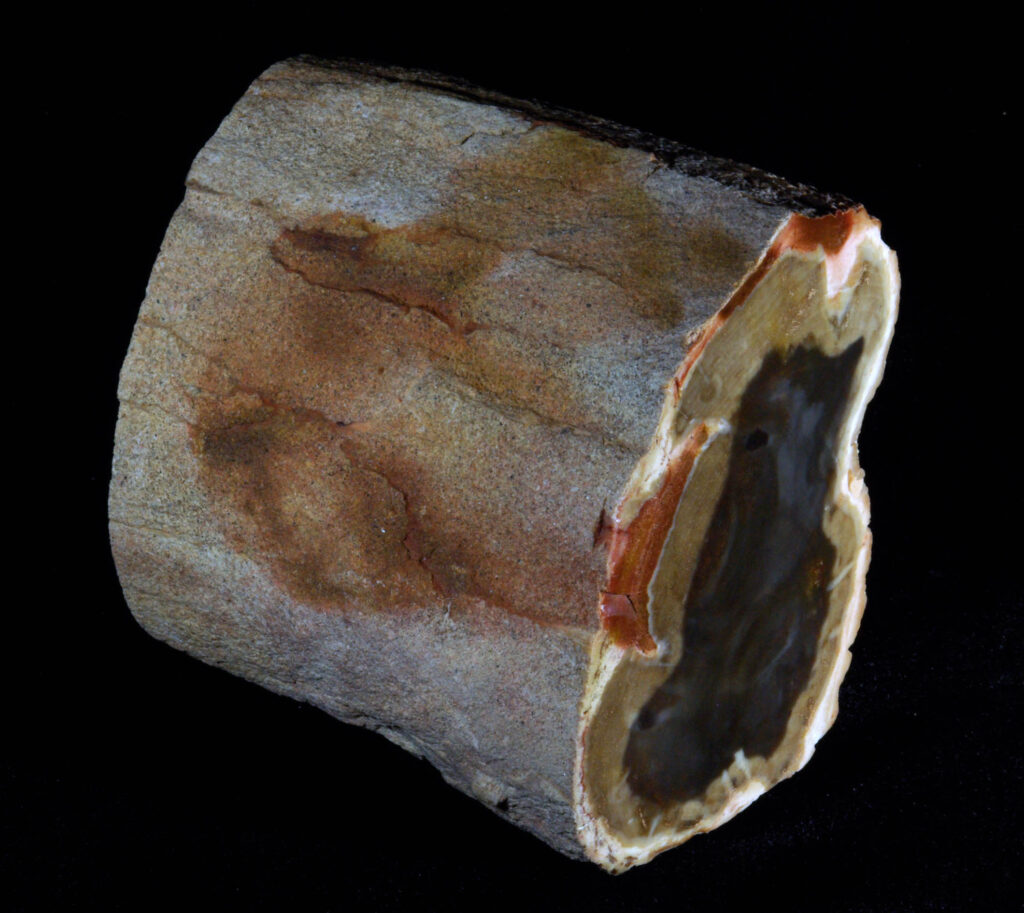
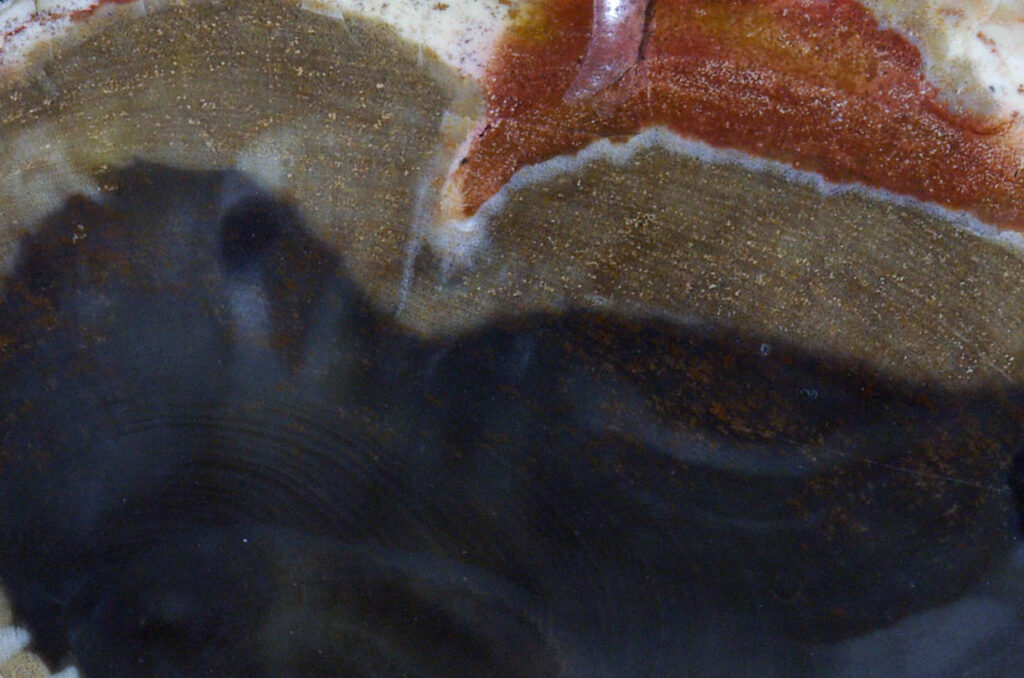
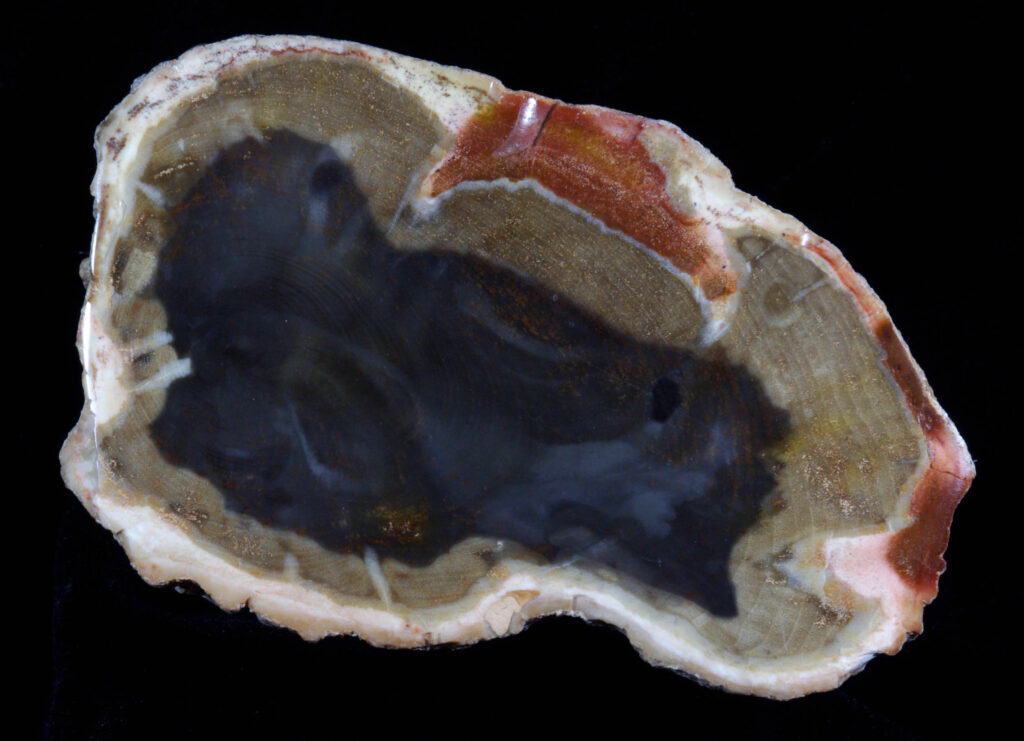
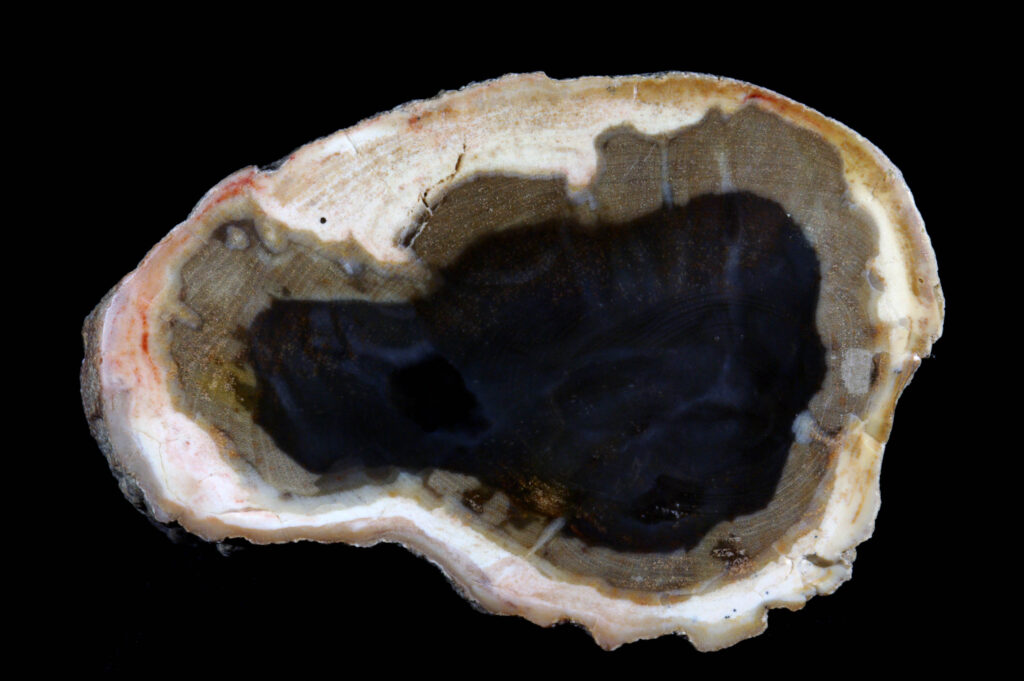
4. Grassy Mountain. Malheur County. Succor Creek Formation. Miocene. Diffuse porous hardwood full round log in a rare state of preservation. Cut and polished on both ends. Amazingly solid and problem free— no glue and no fillers—attractive coloring with deep, wispy, translucence in the center. Worth viewing under magnification/dreamy cell structures. 11 cm long (or tall); 11.5 by 7 cm mirror-polished faces; three pounds and eleven ounces.
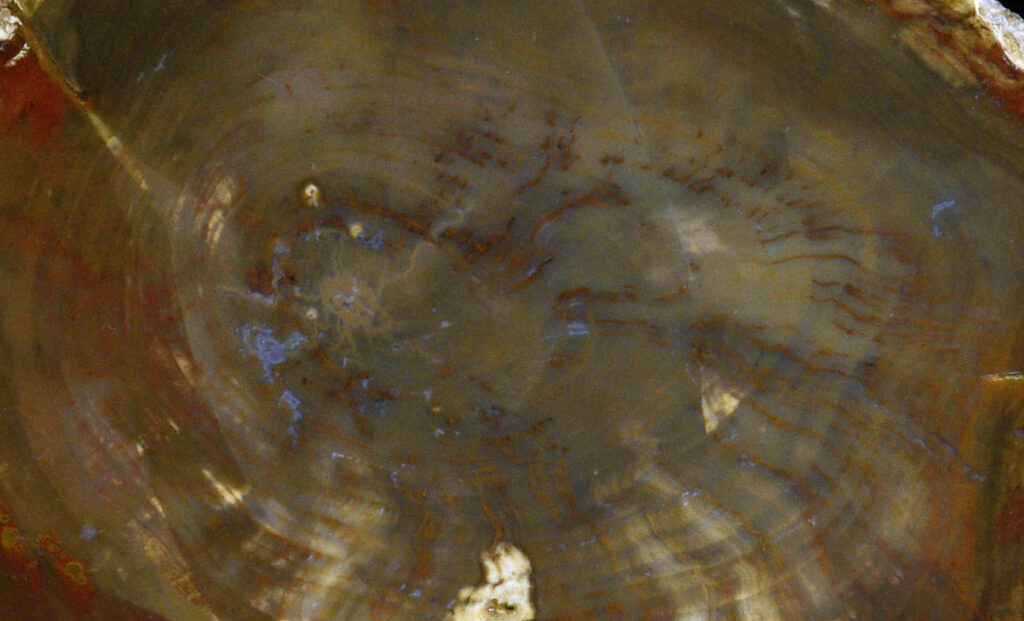
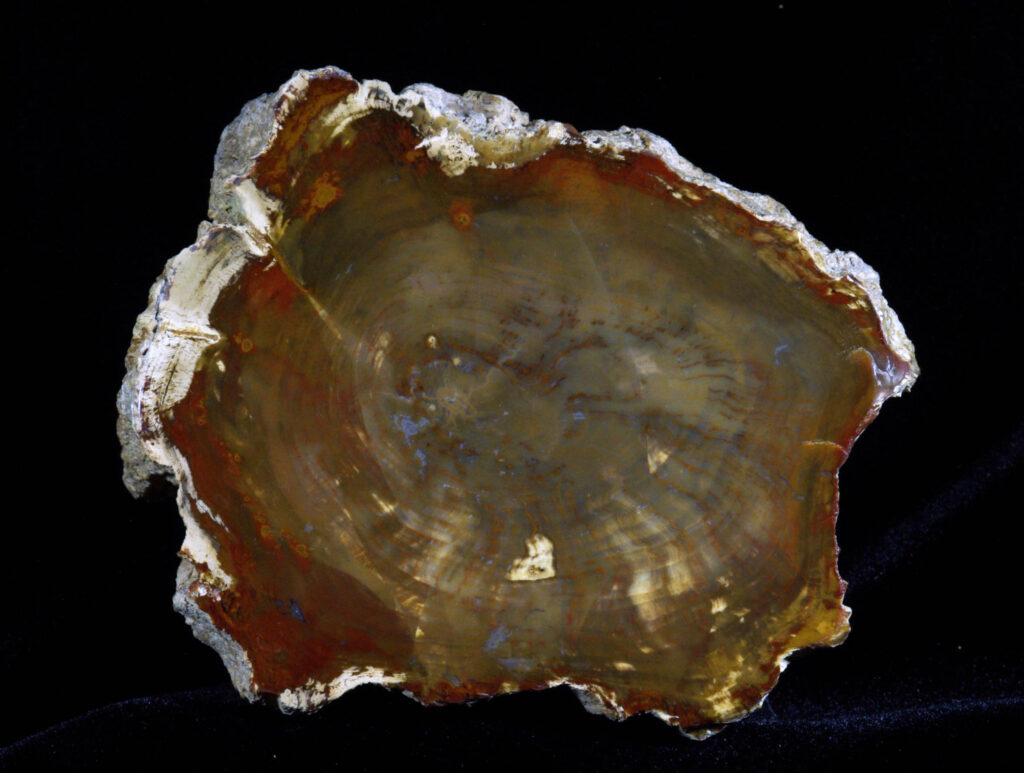
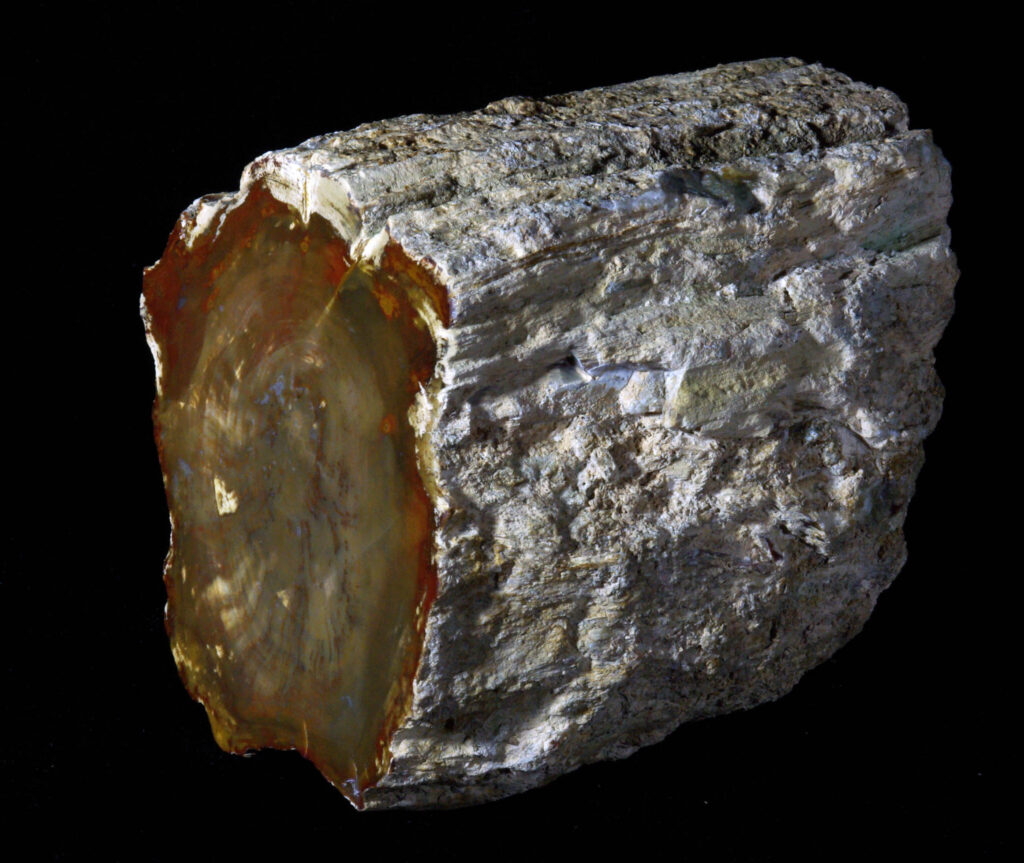
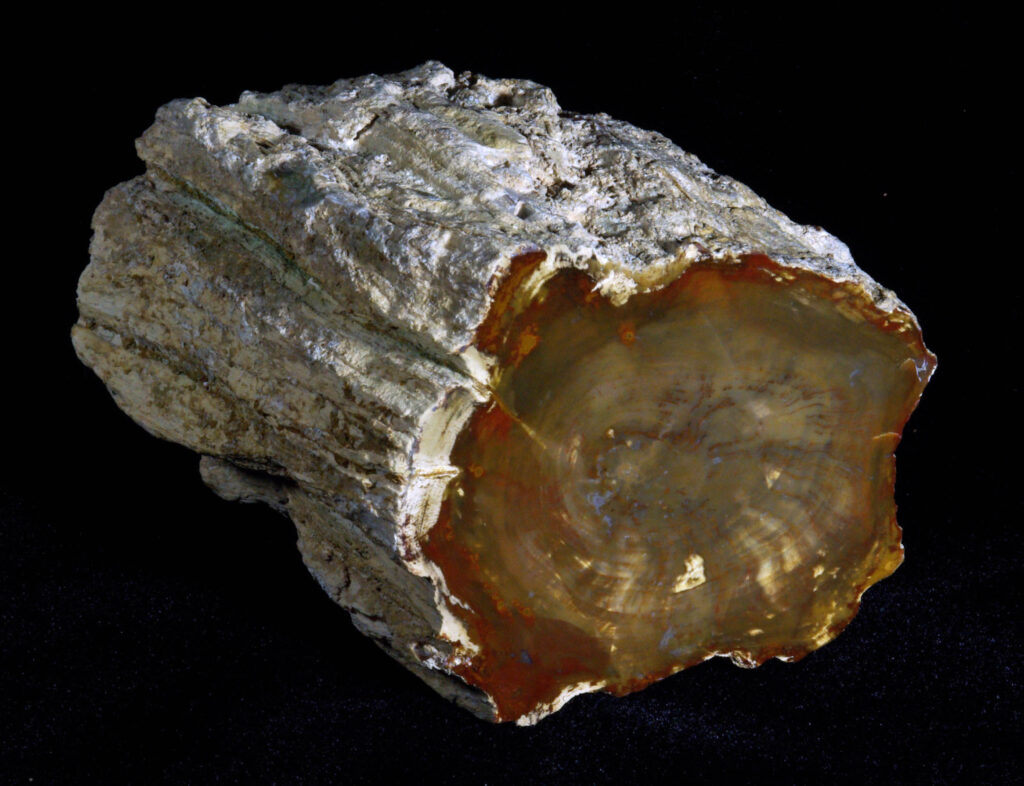
5. HooDoo Basin, Malheur County. Succor Creek Formation. Miocene. Hardwood. Full round log section, cut and polished on one end, natural on the other. Colors only in HooDoo wood. Macerated cell structures that are difficult to identify but appear to be a hardwood. Fabulous under magnification for patterns, agates, mineralization. No filler/No glue. 7.5 by 9.5 cm mirror polished face and 10.5 cm long; two pounds and fourteen ounces.
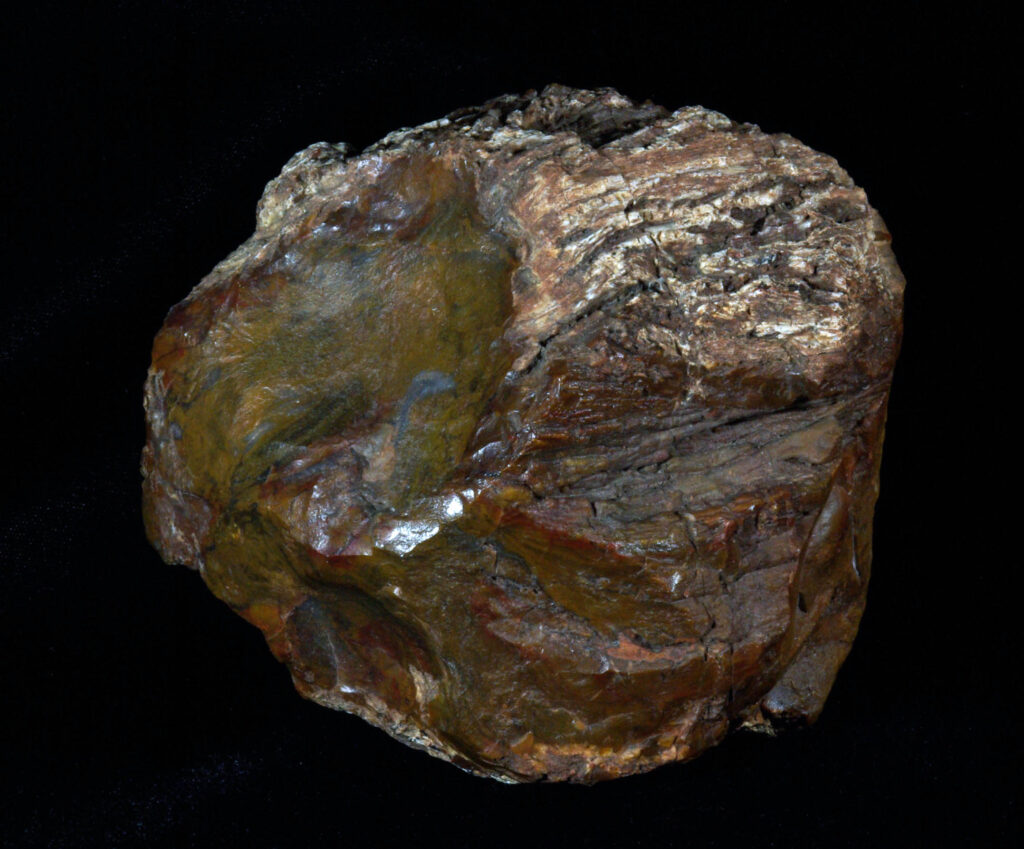
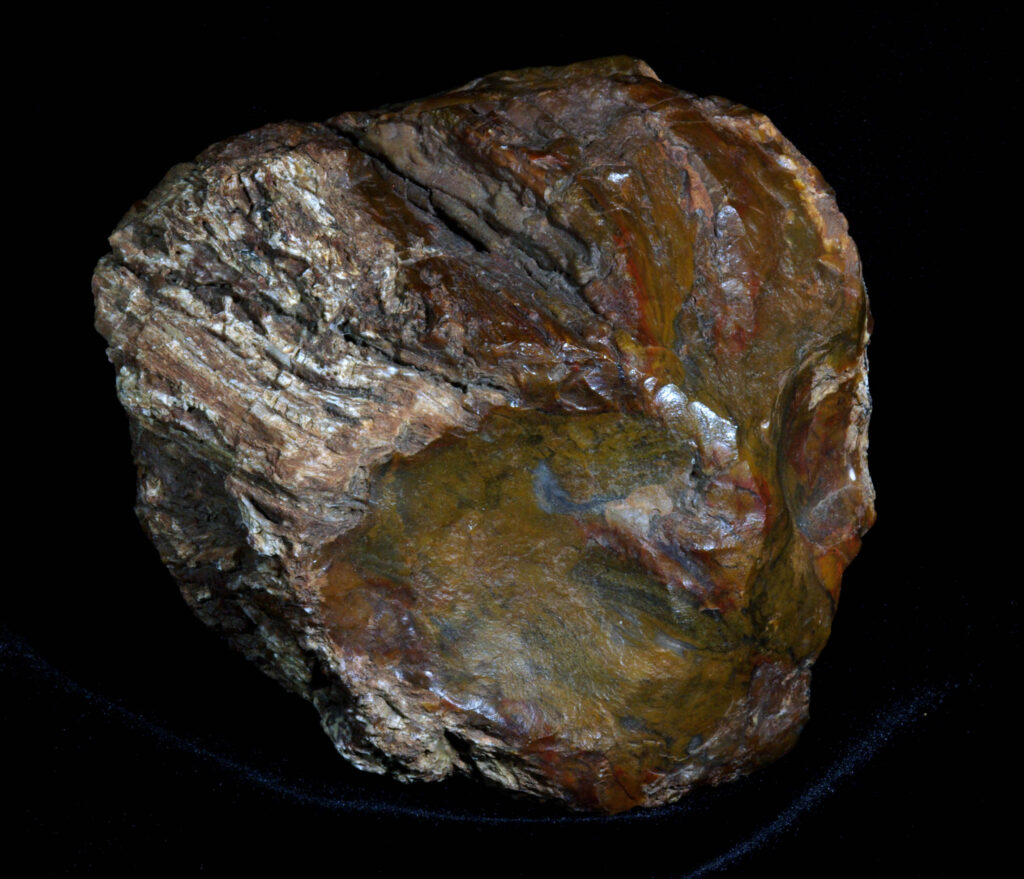
6. Grassy Mountain. Malheur County, Succor Creek Formation. Miocene. Old-time surface-collected specimen oozing with character. Perfect and gem-like. Rugged with wind/sand polish. This specimen should never be cut or polished. Solid and problem free—no glue and no fillers—beautiful colors. 11 by 9 by 13 cm; three pounds and nine ounces.
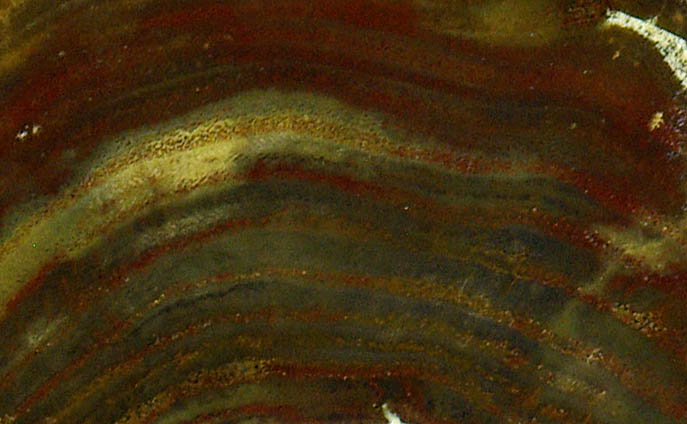
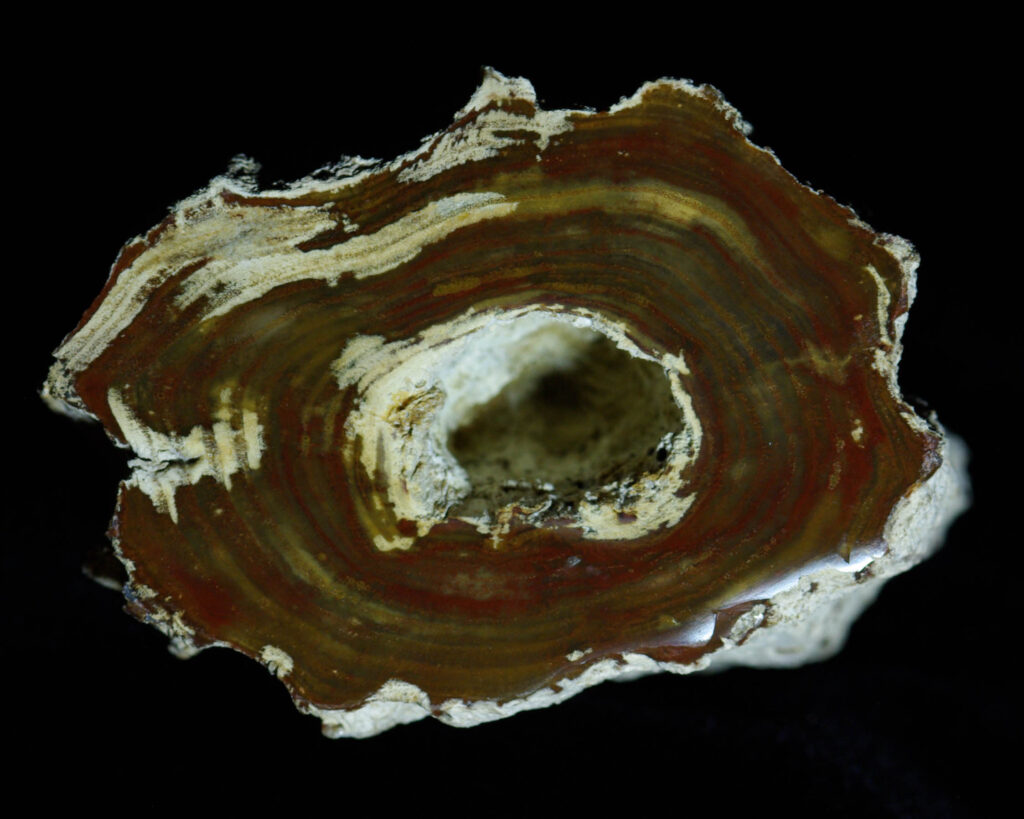
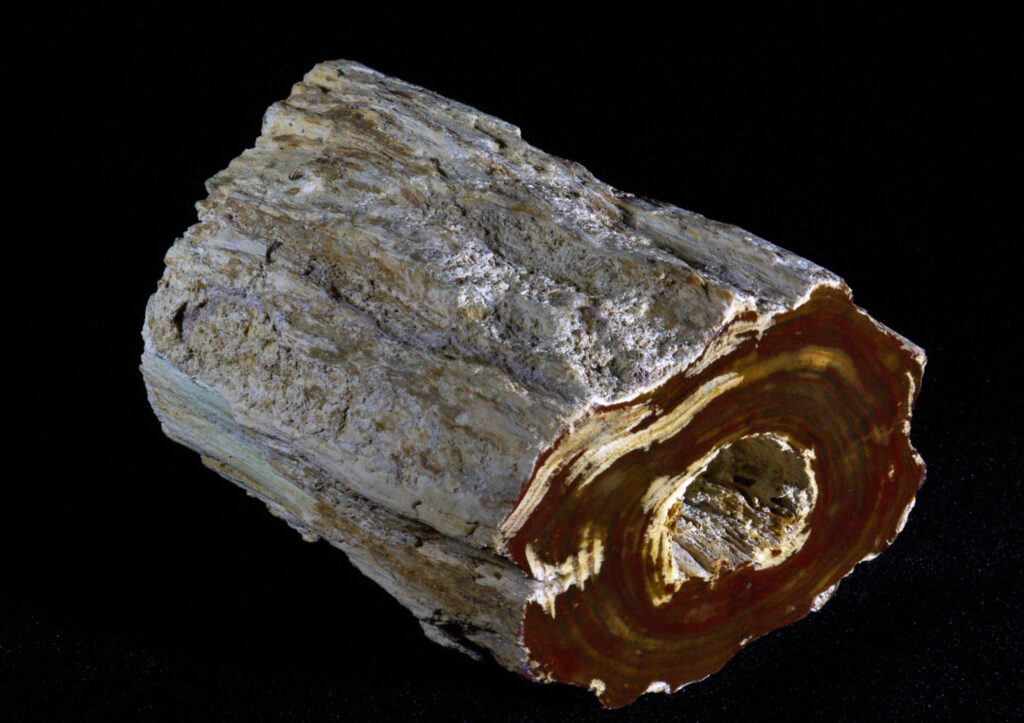
7. HooDoo Basin, Malheur County. Succor Creek Formation. Miocene. Hardwood. Elm. Full round log section, all natural on one end and cut and polished on the other. Surrounding the hole are beautiful growth rings and colors you see in this combination and hue only in HooDoo wood. No fractures. No filler/No glue. Beautiful silicified otherworldly wood with the hardwood structure of elm. 6.5 by 8.5 cm mirror polished face and 11.5 cm long; two pounds and one ounce.
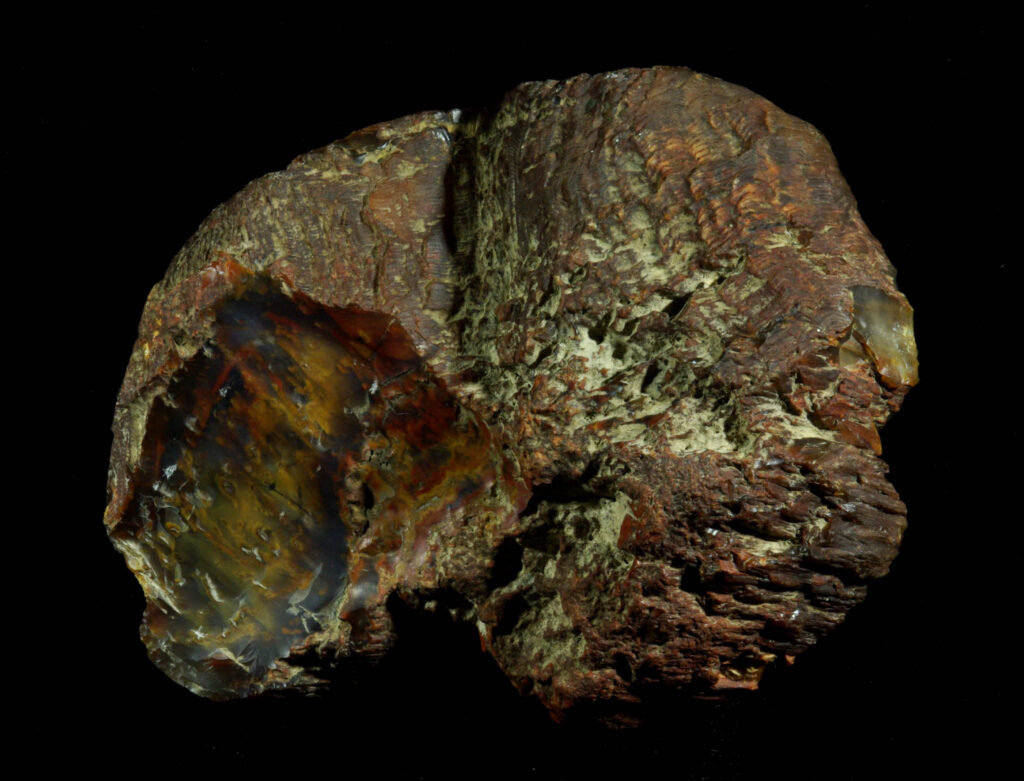
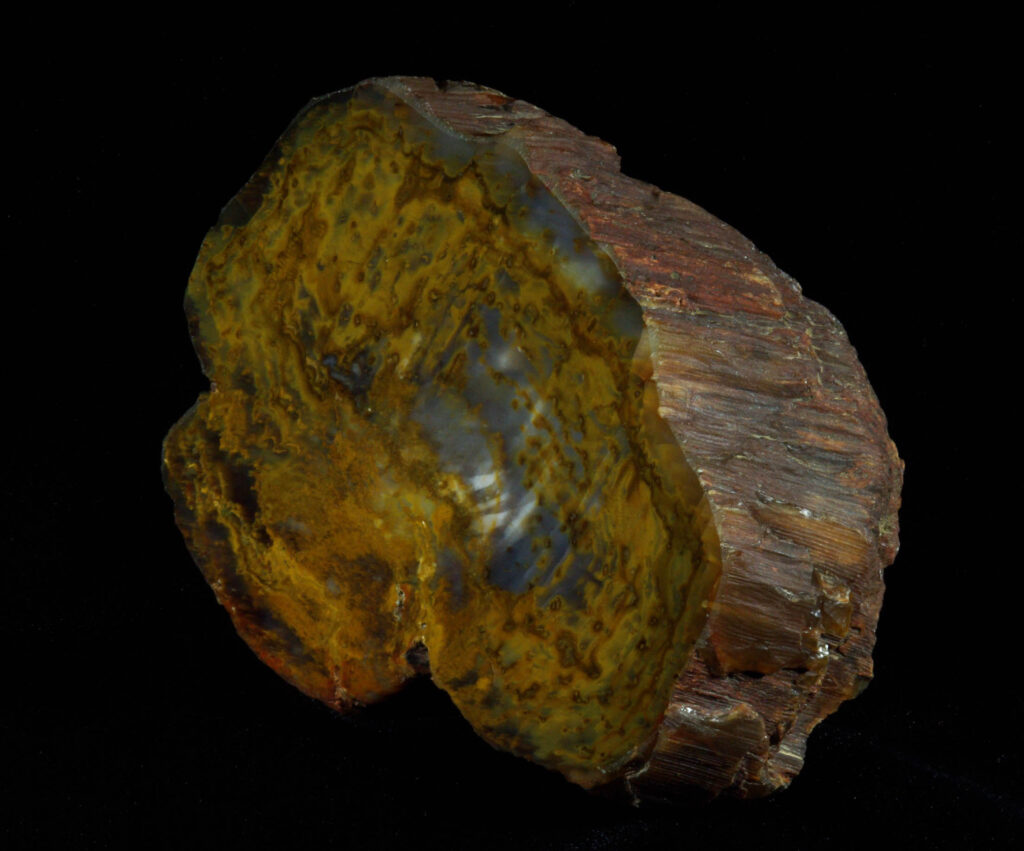
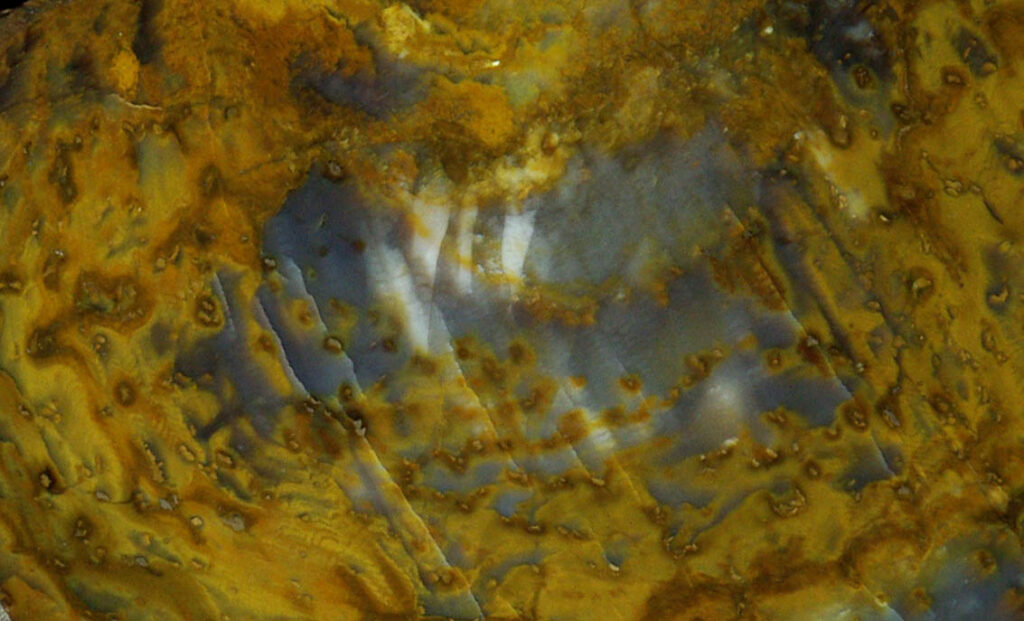
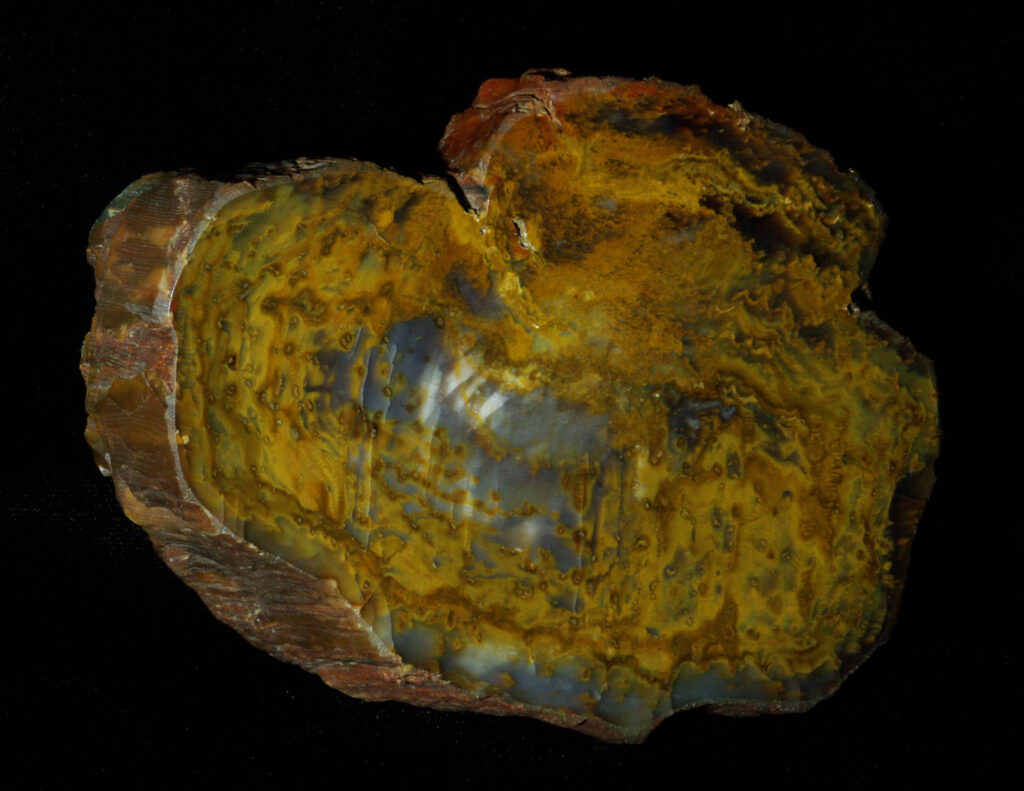
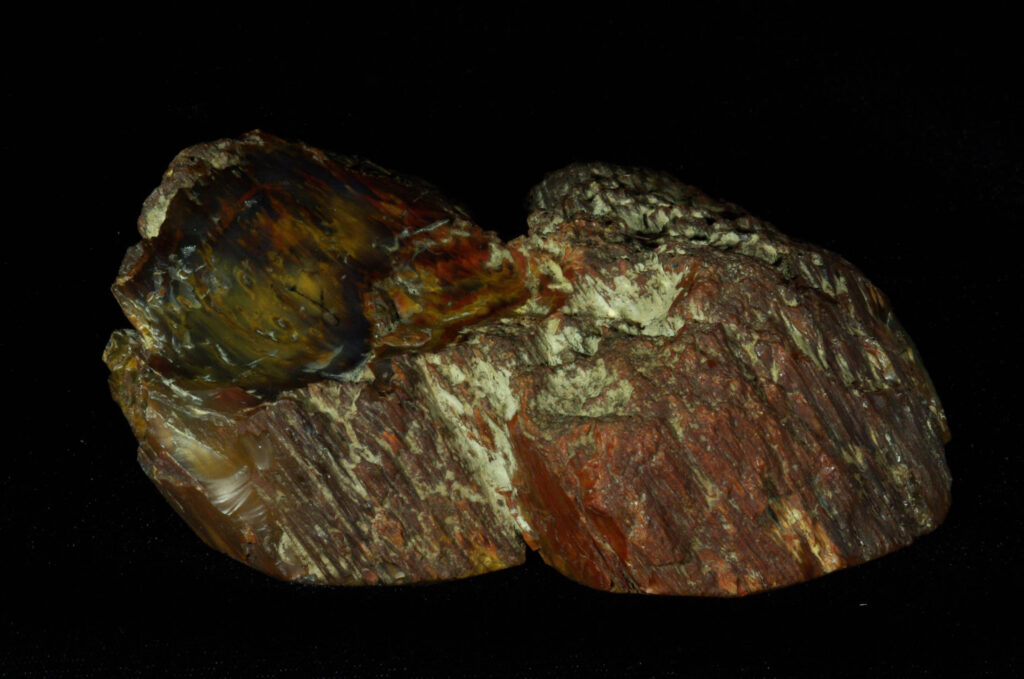
8. Grassy Mountain. Malheur County, Succor Creek Formation. Miocene. Old-time surface-collected conifer specimen with abundant character. Glassy. Rugged with wind/sand polish. Cut and polished on one side. No glue and no fillers. 11 by 9 cm mirror-polished face; up to 42 mm thick; one pound and four ounces.
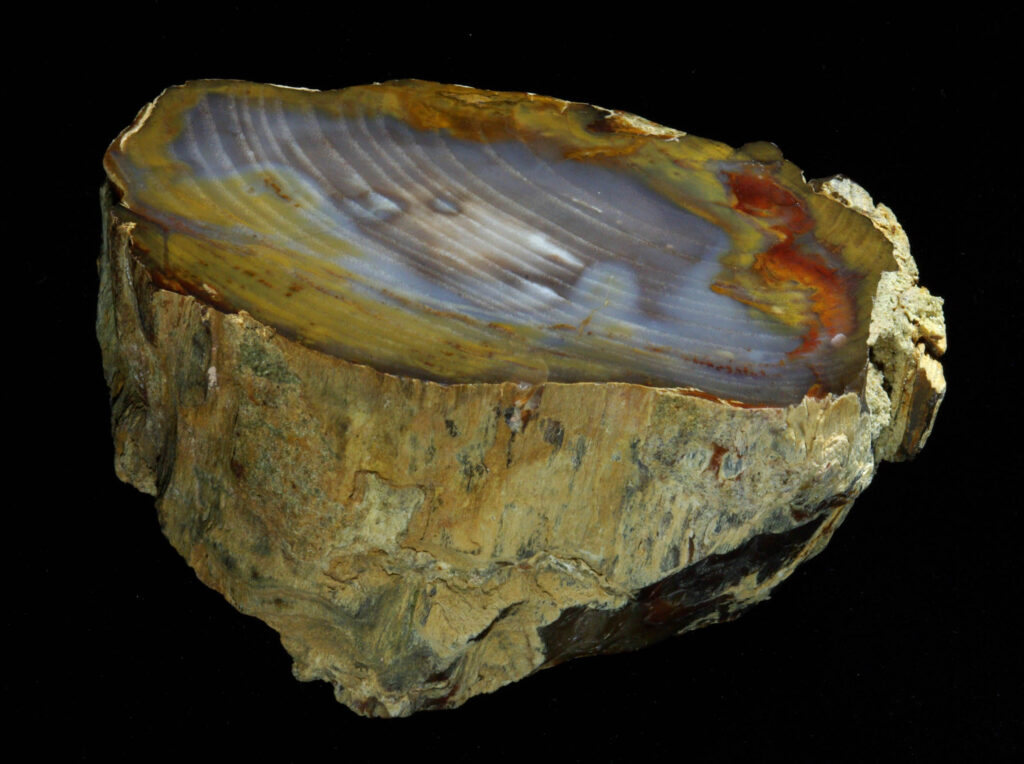
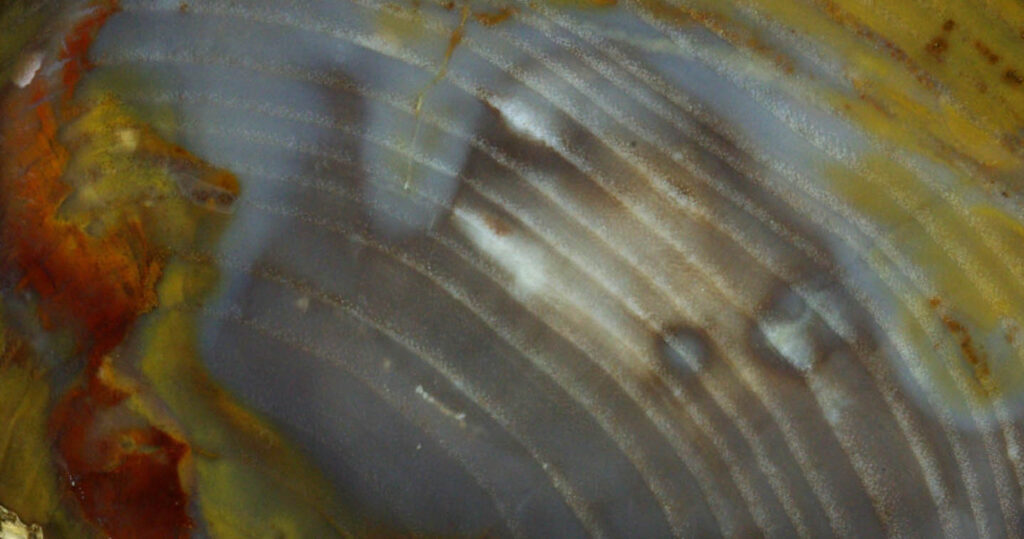
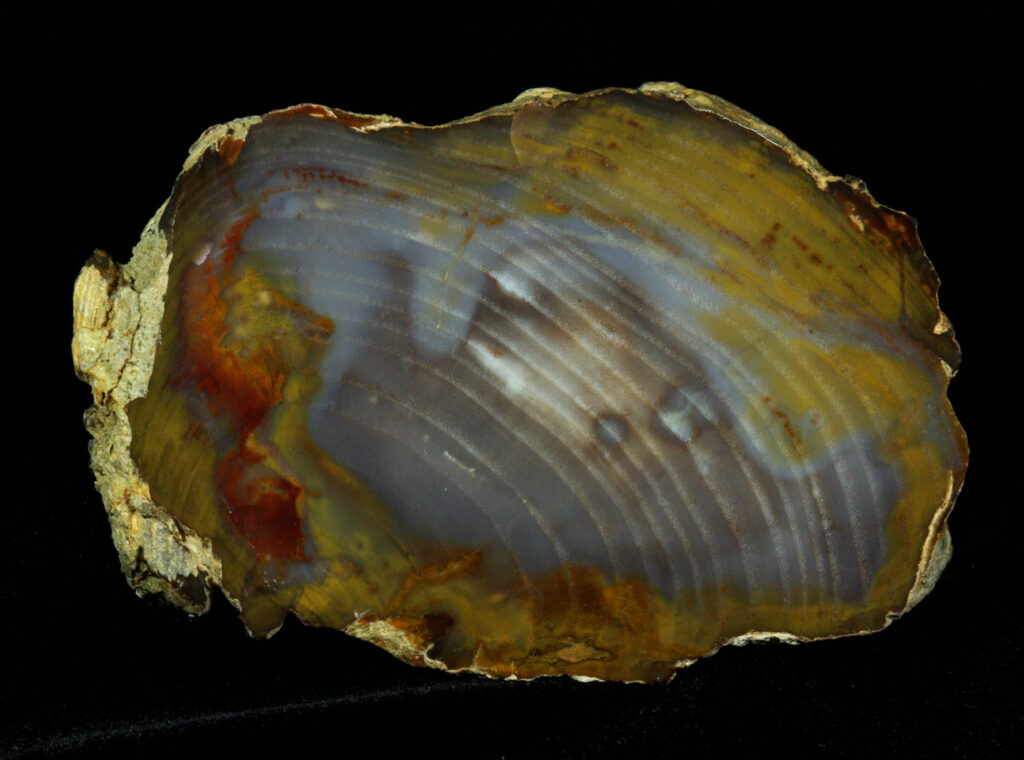
9. Grassy Mountain. Malheur County, Succor Creek Formation. Miocene. Hardwood (ring-porous or semi-ring-porous). Cut and polished on one end. No glue and no fillers—beautiful display of colors and growth rings—dreamy under magnification. 11 by 7.5 cm mirror-polished face; 6 cm thick; one pound and fourteen ounces.

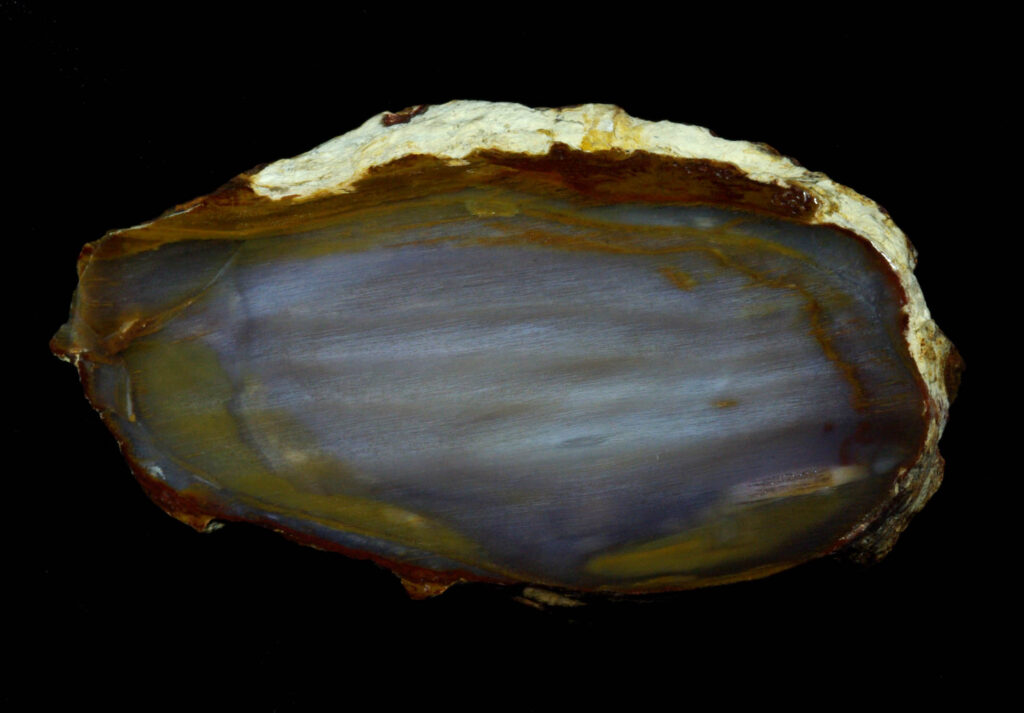
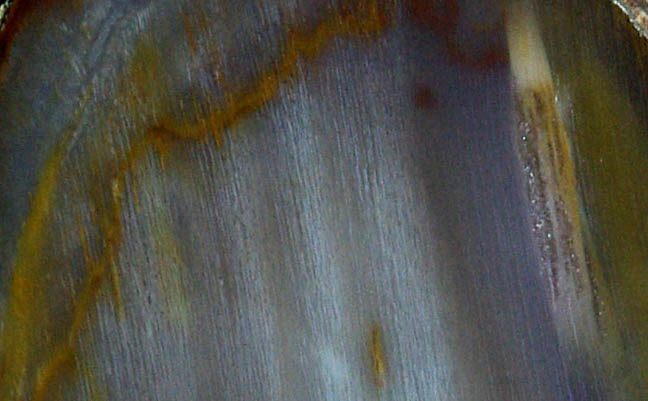
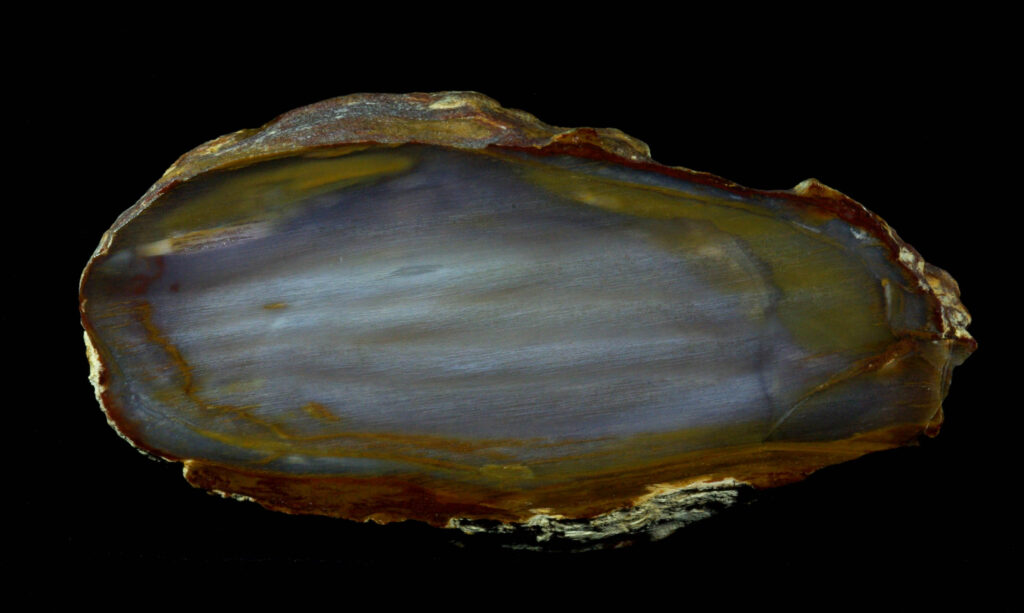
10. Grassy Mountain. Malheur County, Succor Creek Formation. Miocene. Over the years I’ve had numerous customers who strictly collect only complete, more-or-less round, cross-sectional slices. To each his own or her own, but I’ve always though it was a mistake. This may be because I cut my petrified wood teeth in the Jurassic-age Morrison formation, which offers very few pieces that meet this criterion. So, when I see a piece like this which I think is astoundingly awesome and perfect, even though it’s a specimen round and cut on the longitudinal axis, I think of those collectors who intentionally miss out. (I once had a customer who collected only orange mineral specimens). This is an excellent example of the blue wood from the Grassy Mountain area, which in my experience is usually driftwoody and wind/sand polished, as is this one. Highly silicified and problem-free. It’s a pleasure to hold and examine and turn in your hand. It’s art glass. Now look under magnification – long strands of waving ancient cellular material shimmering crystal blue like ice. Cut and polished on one side, otherwise all natural. No glue and no fillers. 6.5 by 15 cm mirror-polished face; 22 mm thick; fifteen ounces.
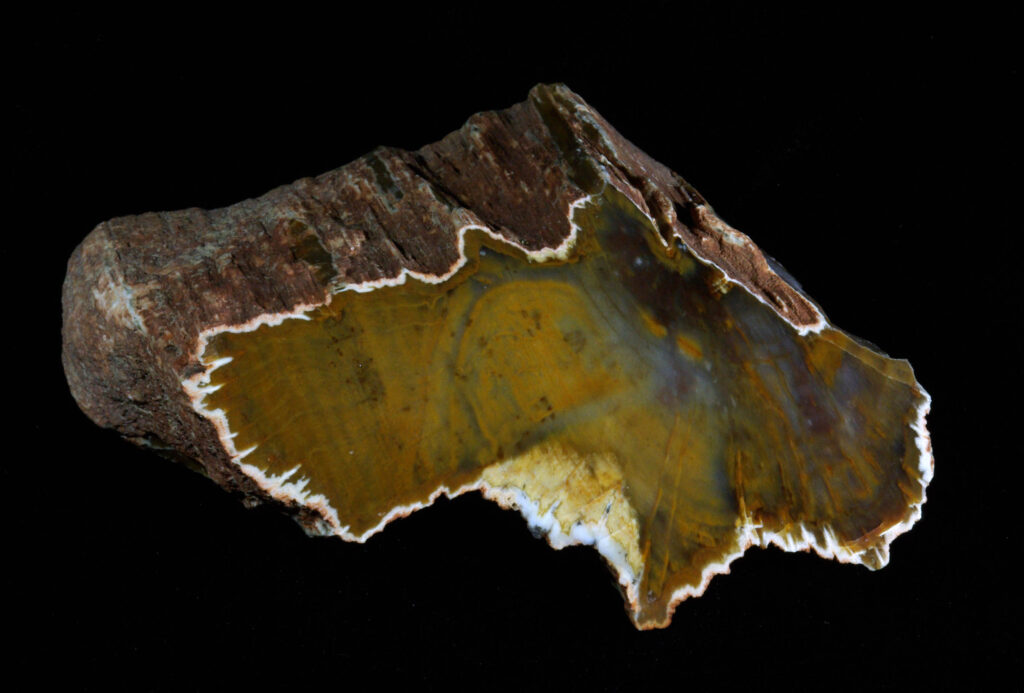
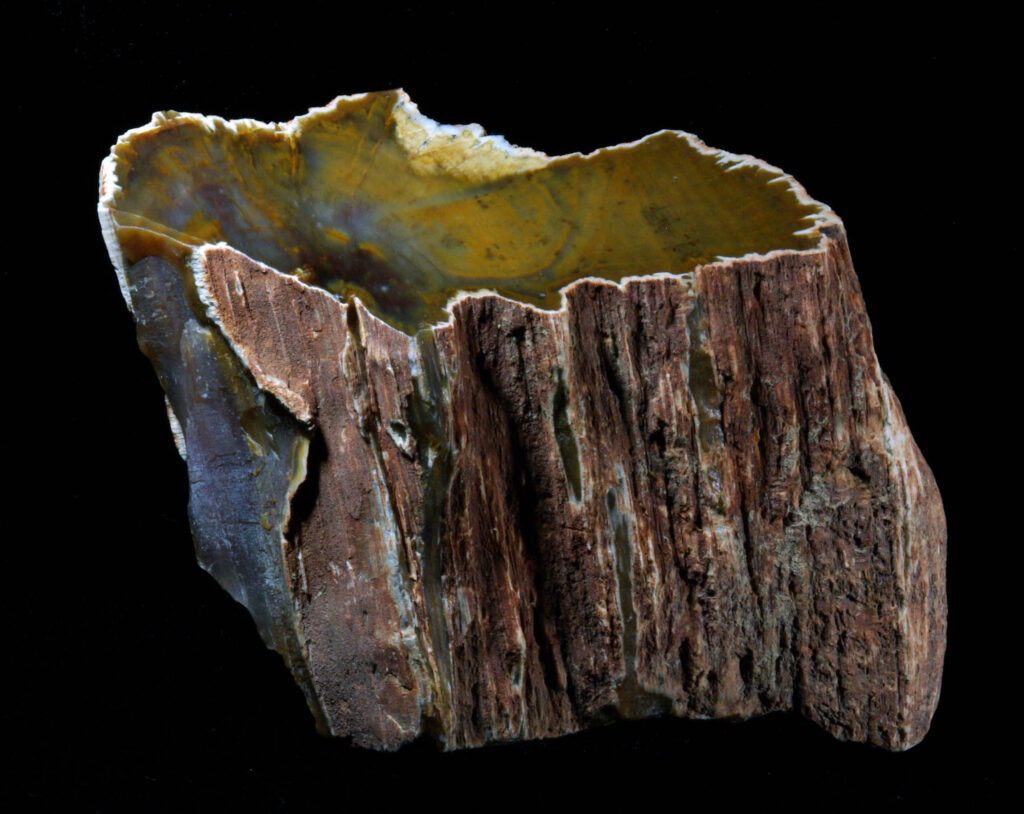
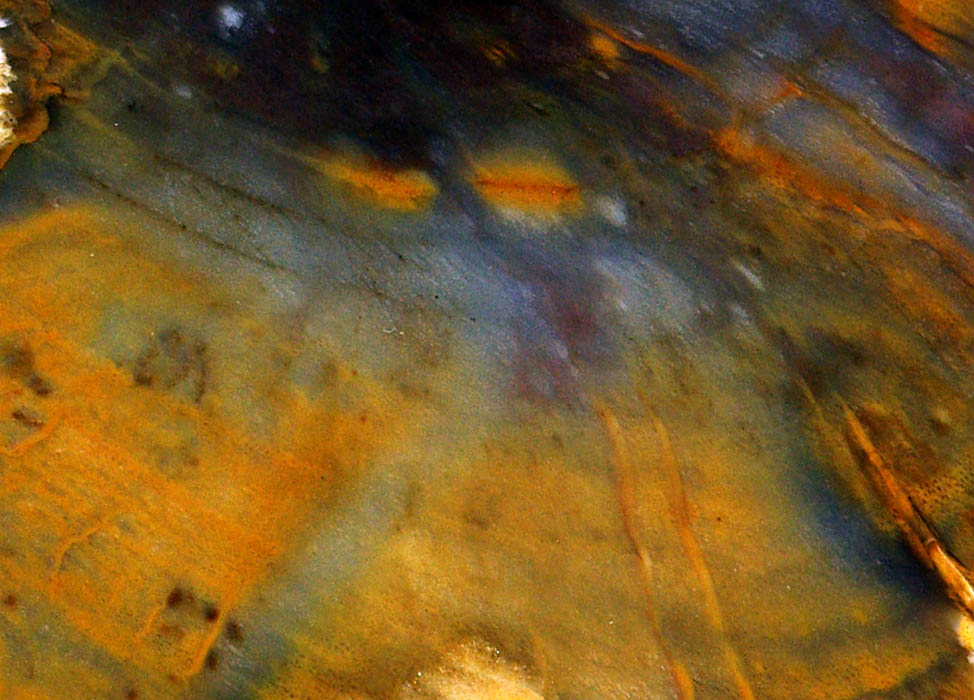
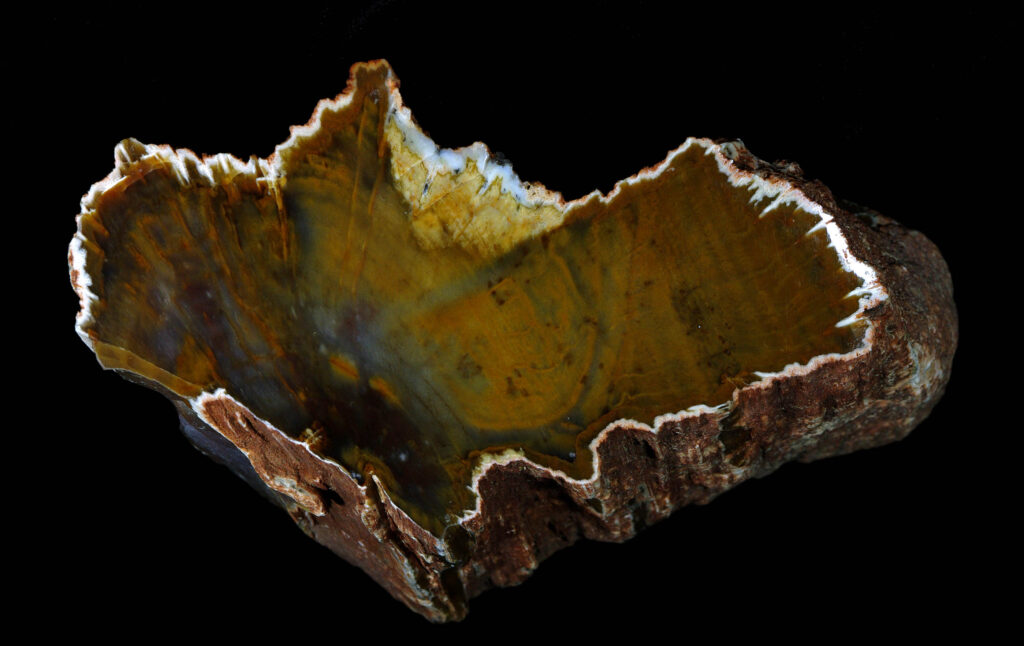
11. Grassy Mountain. Golden oak. Hard to imagine more beautiful wood than this. Specimen round with one cut and polished face. It includes about half the original pith. Top notch cellulars. Old-time surface-collected piece. No glue and no fillers. 12.5 by 7 cm mirror-polished face; 92 mm long; one pound and fourteen ounces.
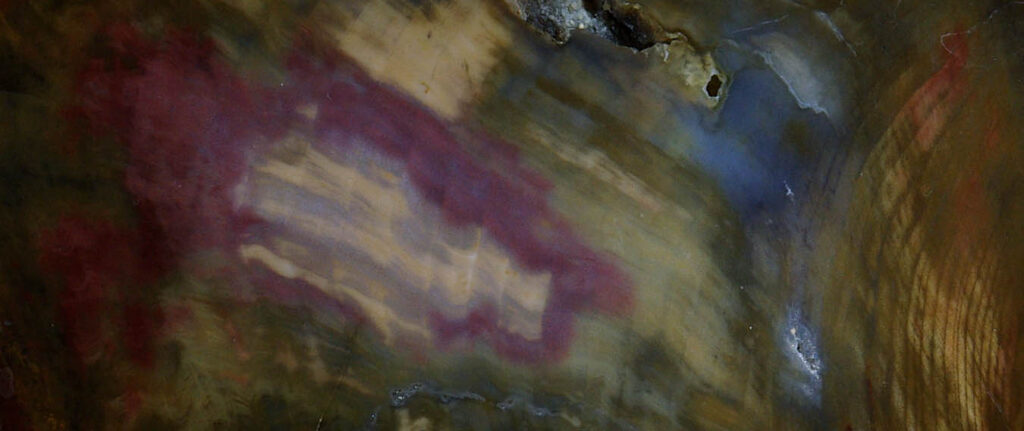
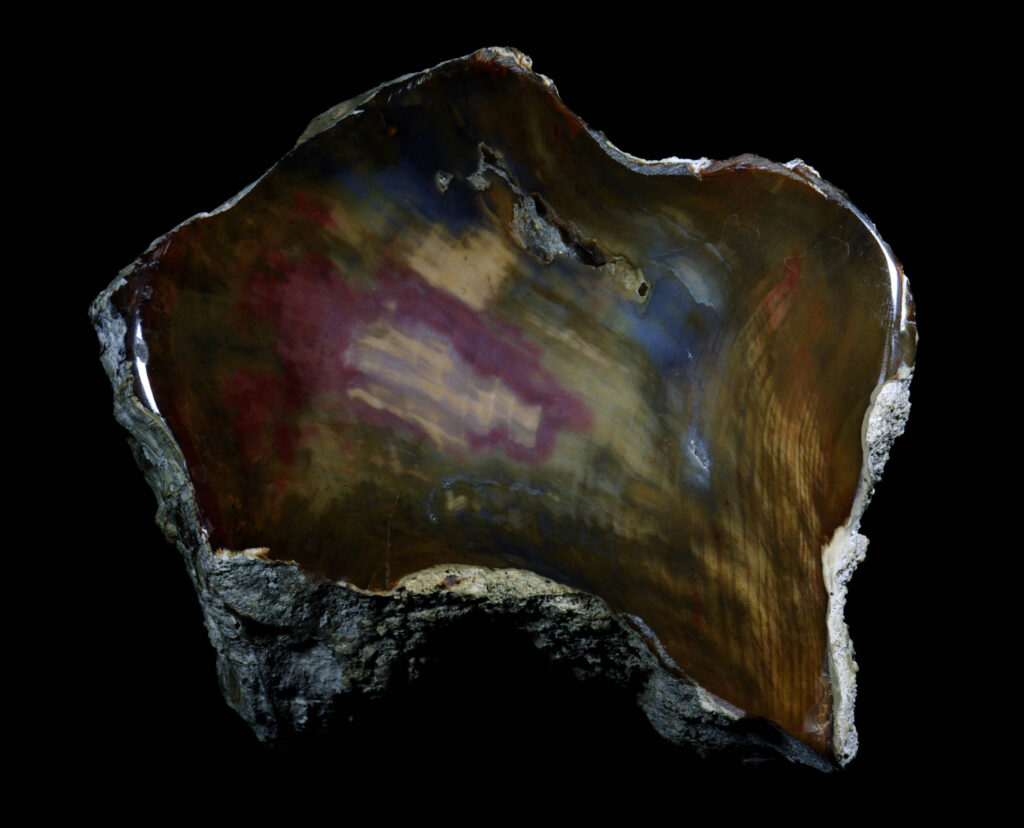
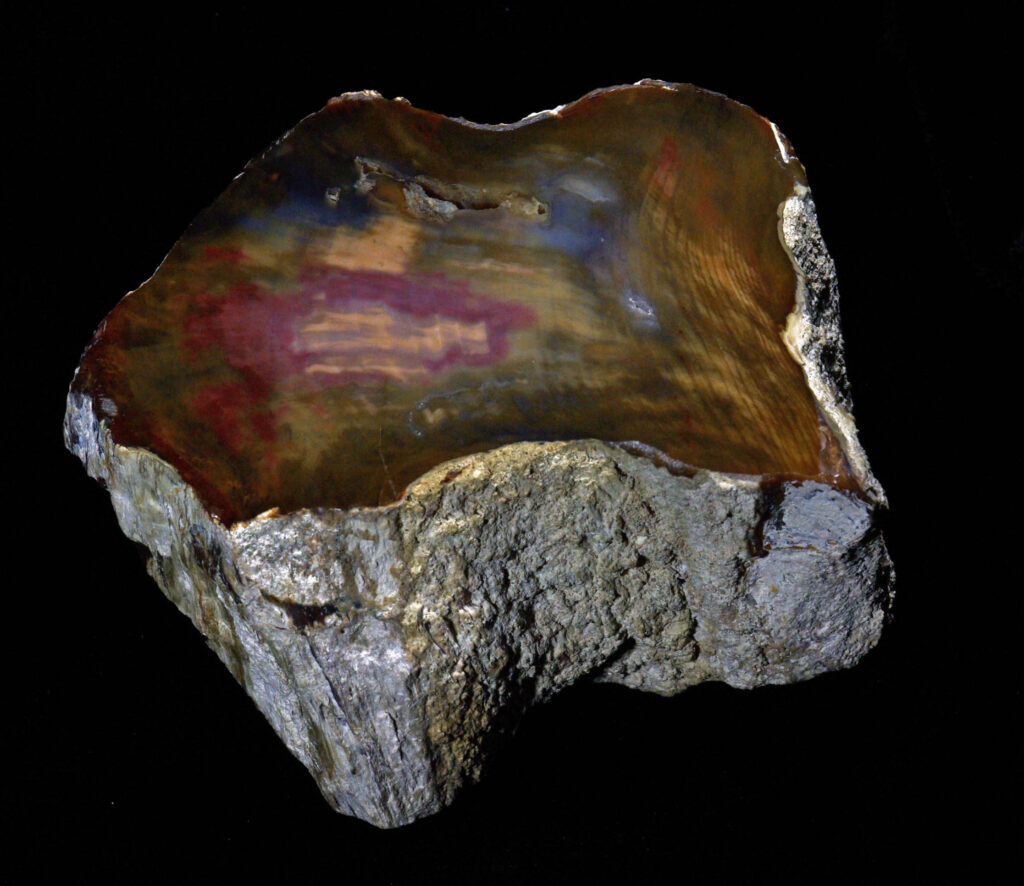
- HooDoo Basin, Malheur County. Succor Creek Formation. Miocene. Specimen round log end, all natural on one end and cut and polished on the other. The wood is about as beautiful as they get with all the HooDoo colors is an elegant and well-balanced display. Within the tiny vug is botryoidal blue chalcedony. You can never tell for sure with a piece like this, but I expect it was a longer log that someone cut slices from. [I heard a story about one of the regular wood-collecting guys back in the 70s who showed up at the Madras Pow-wow with a load of long and beautiful HooDoo logs. I was told they were amazing, but none sold because his price was too high for the rockhounds back then. The following year he came back and had every log cut into slices the size of coasters. So much great wood was cut up to make bolo ties and belt buckles. You can’t put it back together.] No filler/No glue. 10 by 7 cm mirror polished face and 8 cm long; one pound and fourteen ounces.
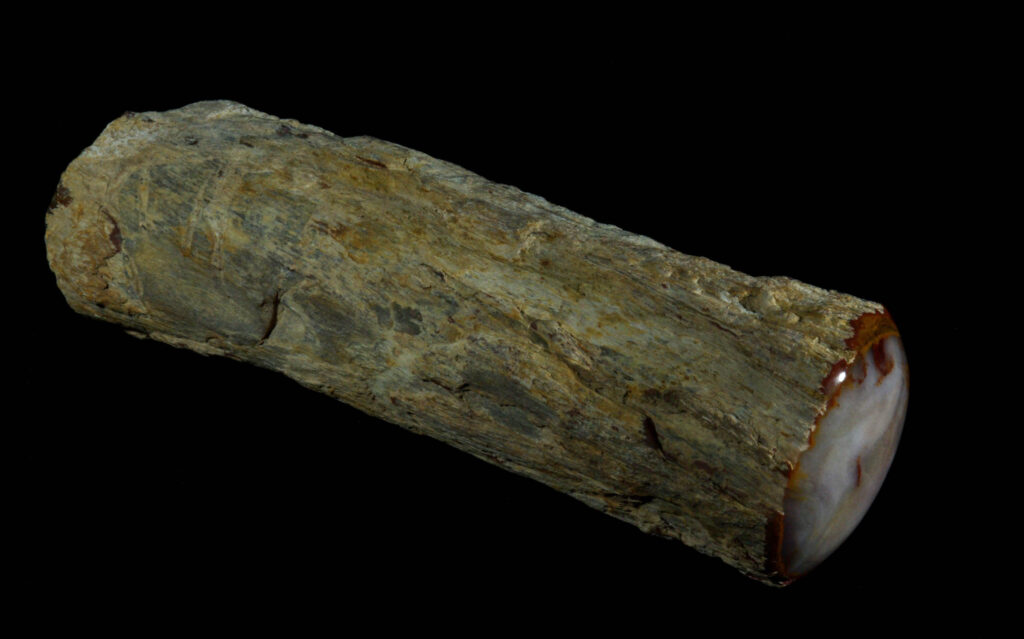
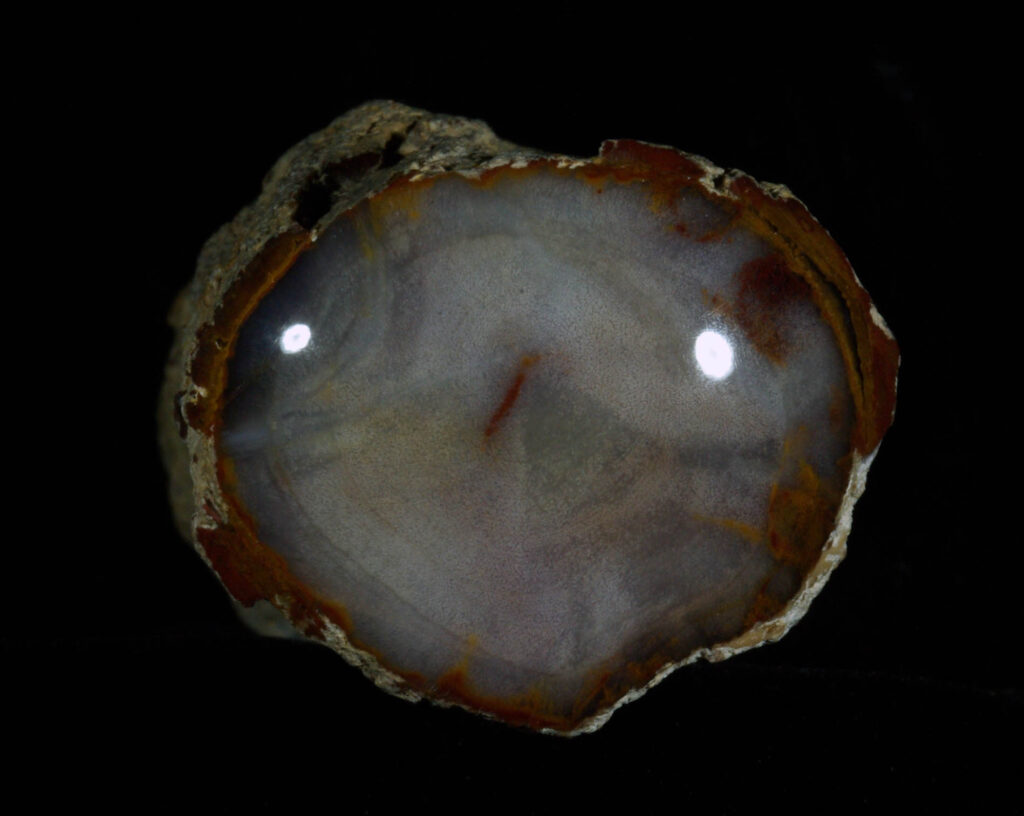
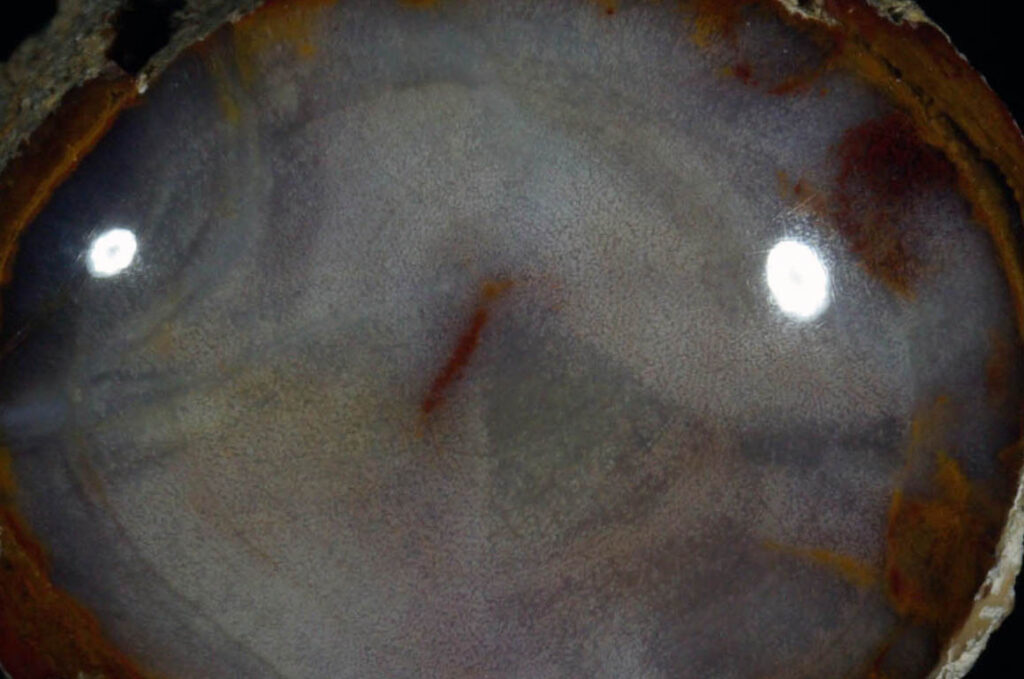
13. Grassy Mountain. Malheur County, Succor Creek Formation. Miocene. Rare full round hardwood limb section, cut and polished on one end, otherwise all natural. Remarkably perfect. No glue and no fillers. 3.5 by 4 cm mirror-polished face; 15 cm long; one pound and three ounces.
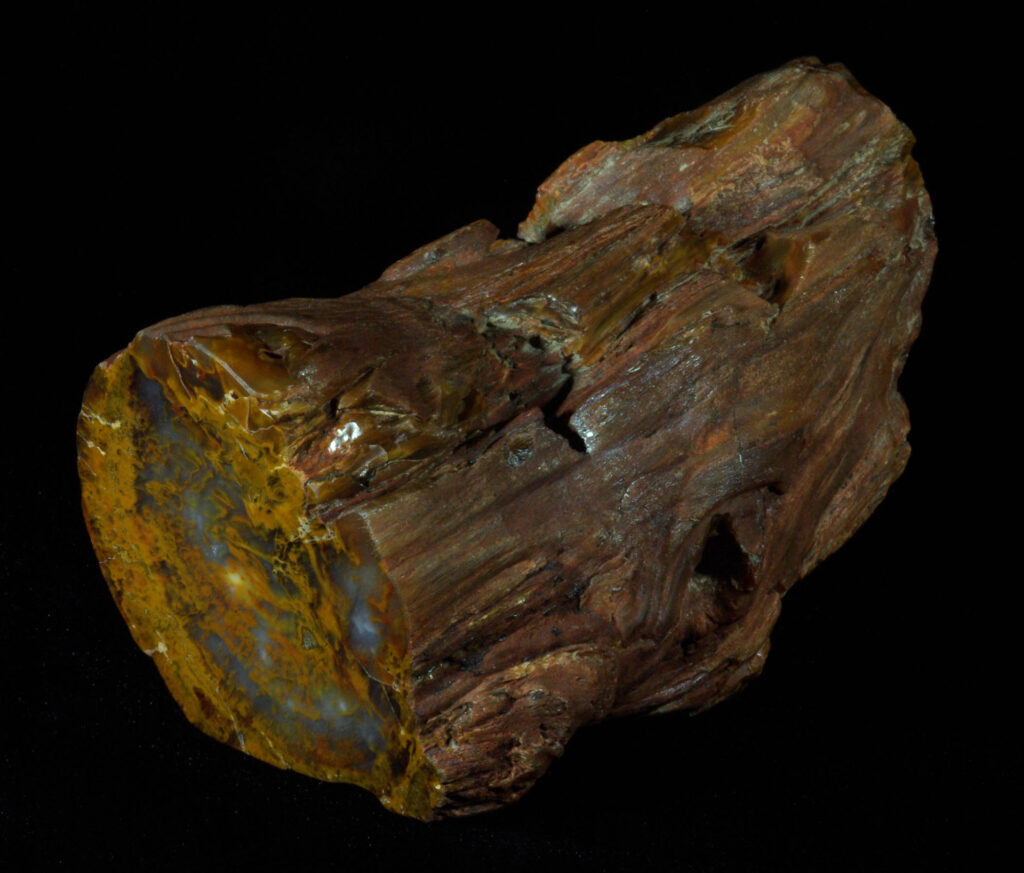
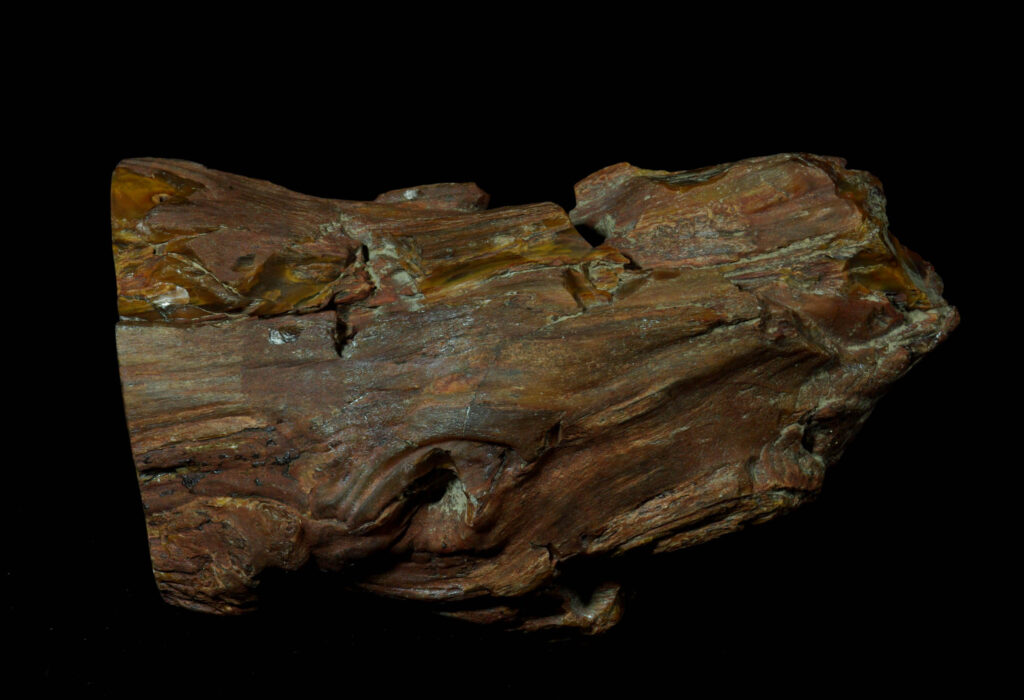
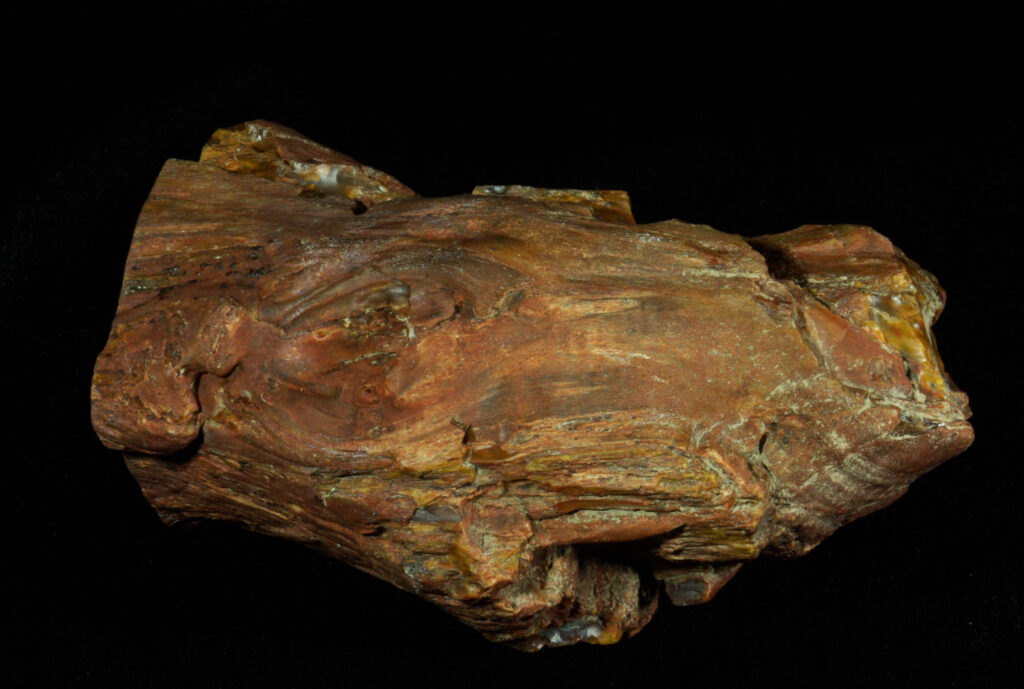
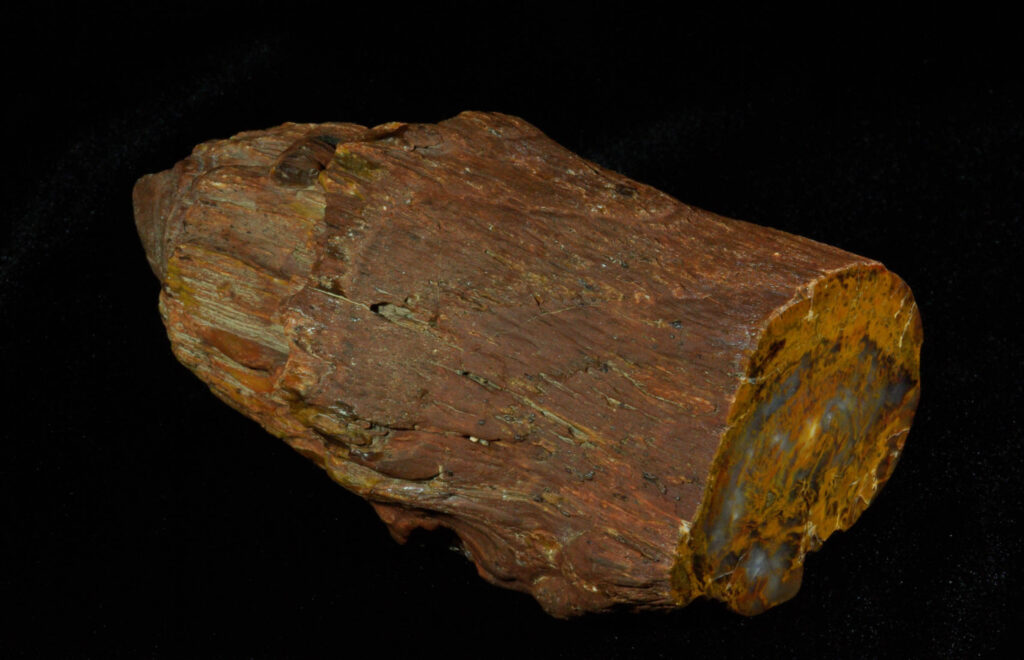
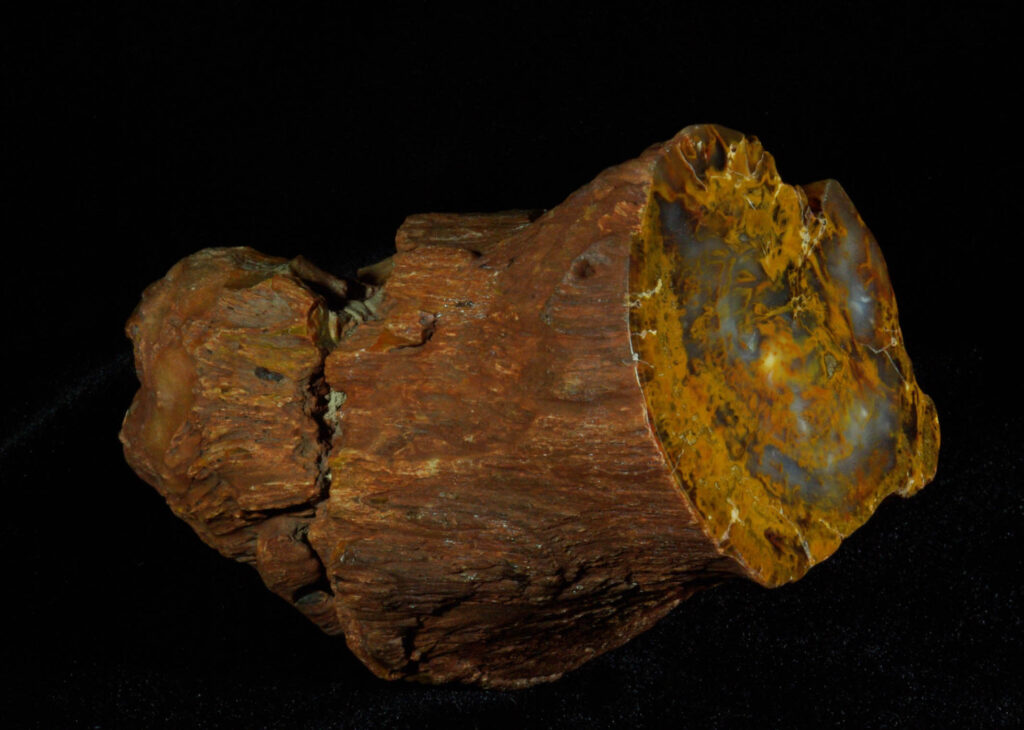
14. Grassy Mountain. Malheur County, Succor Creek Formation. Miocene. An aesthetic thrill. Deep red patina, knots and knot holes, sculpted by wind and sand over millennia on an inhospitable terrain, in a full round branch with one cut and polished face, otherwise all natural. Appearance-wise, this is one-in-a-million. It’s just what the “limb collectors” like me are always after. No glue and no fillers. 5 by 6 cm mirror-polished face; 12 cm long; one pound and seven ounces.
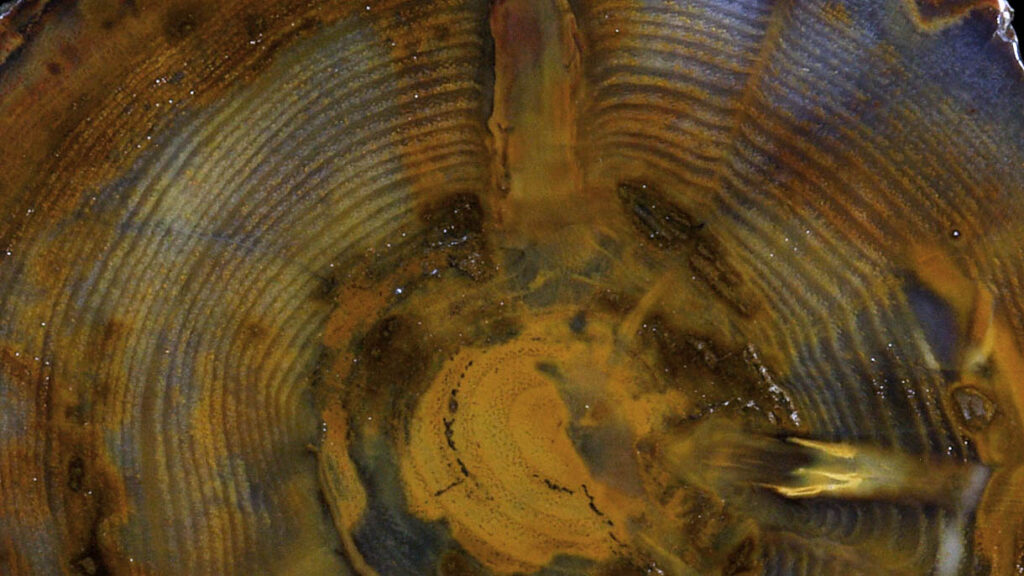

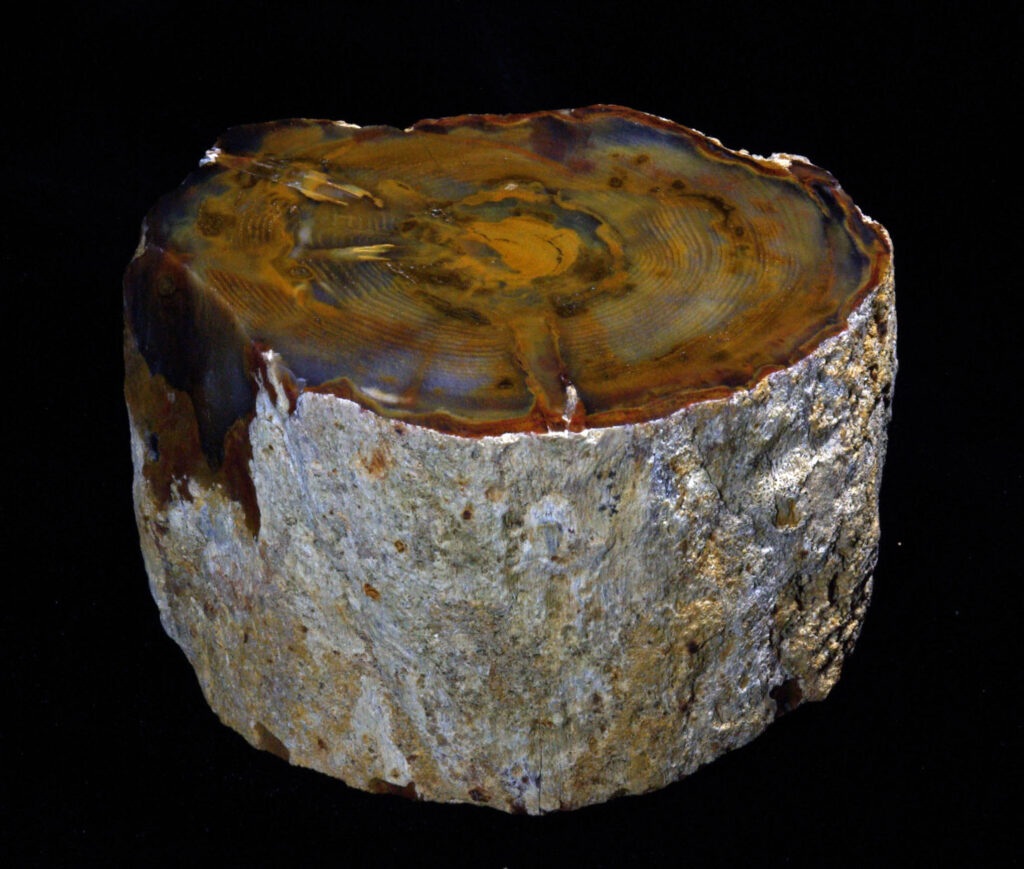
15. Grassy Mountain. Malheur County, Succor Creek Formation. Miocene. Full round hardwood limb section, cut and polished on one end, otherwise all natural. Remarkably perfect. Note multiple twigs. A magnification lollapalooza. No glue and no fillers. Figures in Ancient Forests. 7.5 by 6 cm mirror-polished face; 4 cm thick; one pound and two ounces.
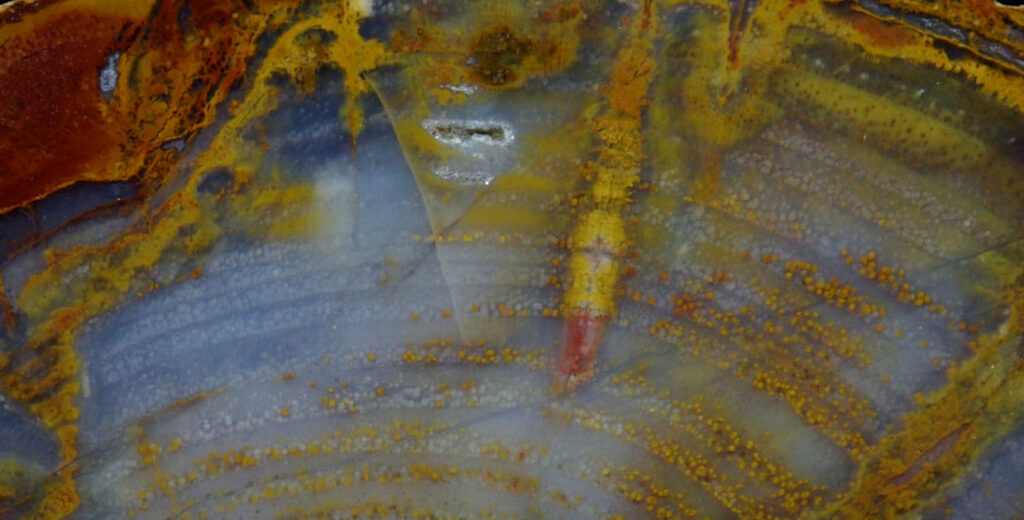
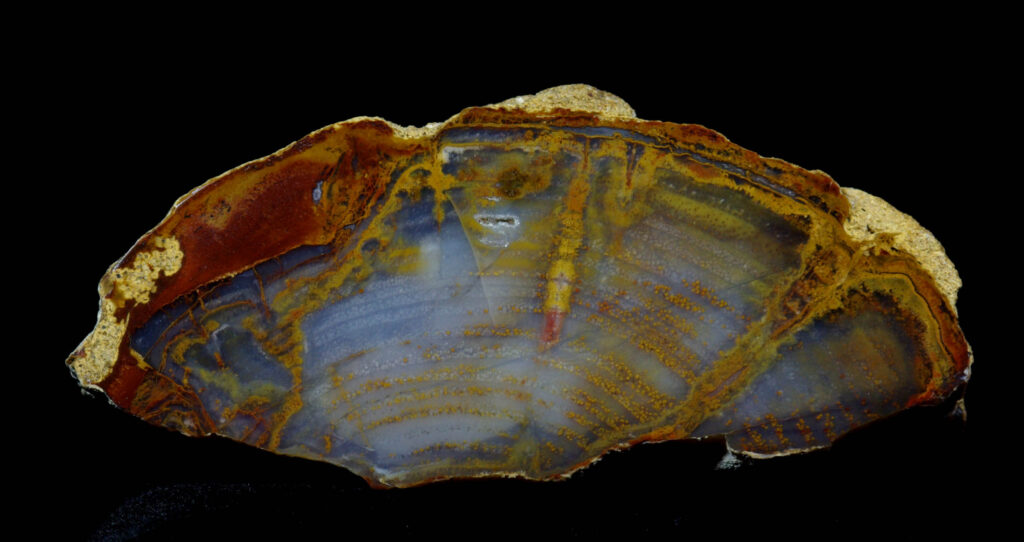
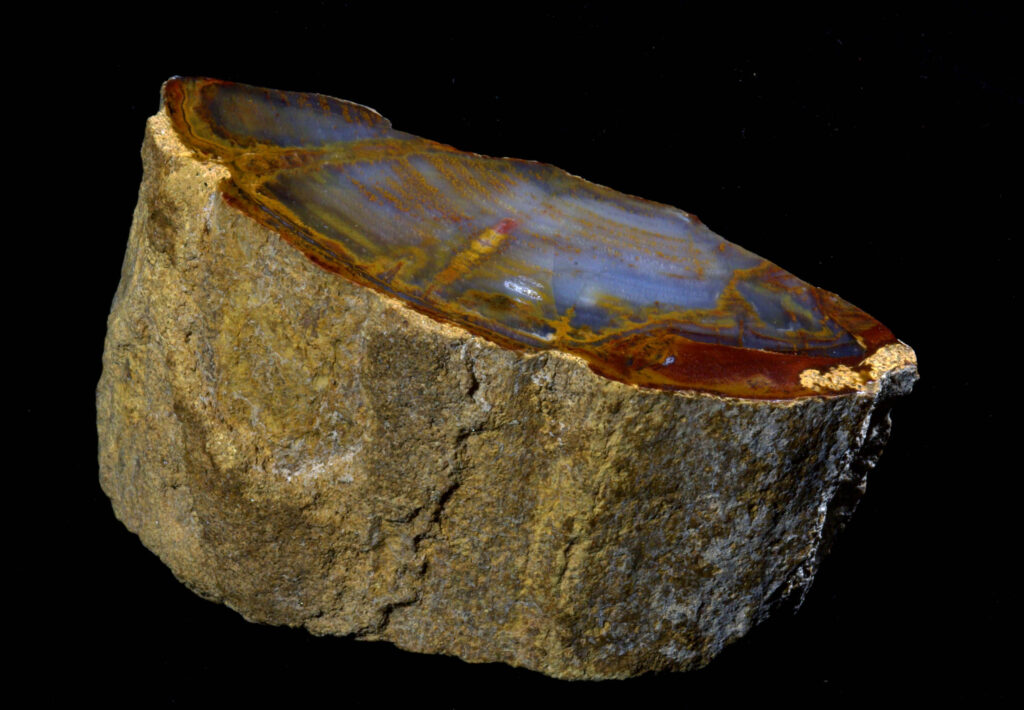
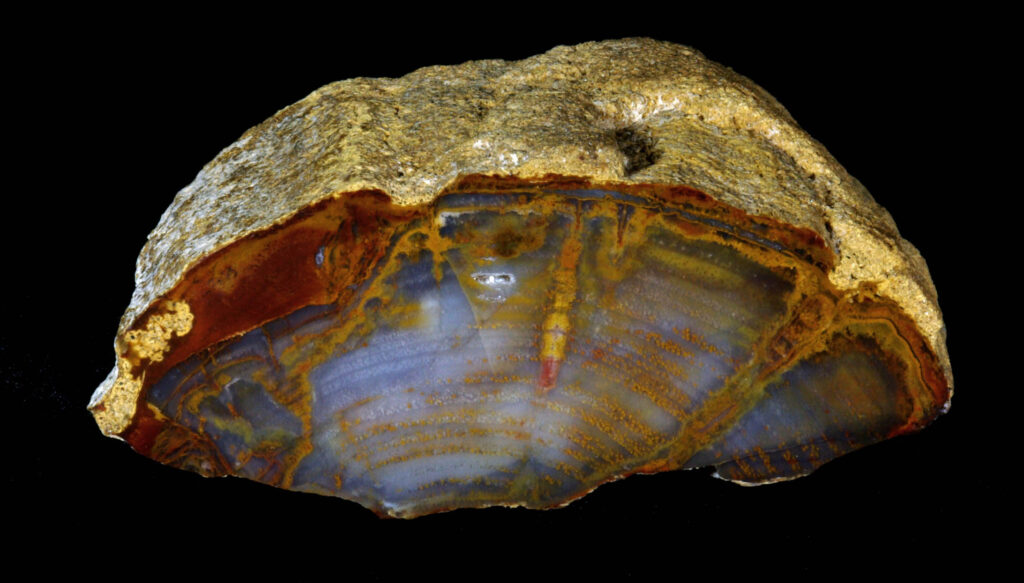
16. Grassy Mountain. Malheur County, Succor Creek Formation. Miocene. Specimen round hardwood limb section, comprising about a third of the full round, cut and polished on one end, otherwise all natural. Beautifully preserved. 10 by 4 cm mirror-polished face; 6 cm long; one pound.
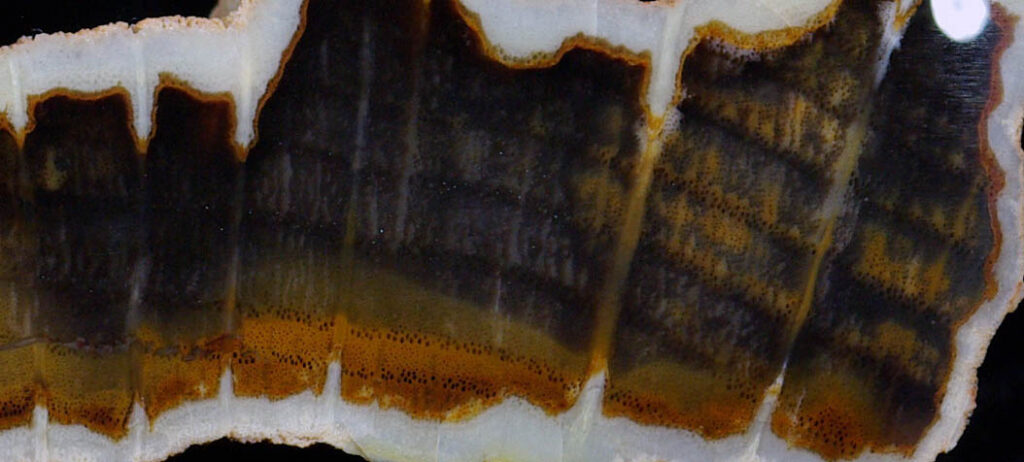
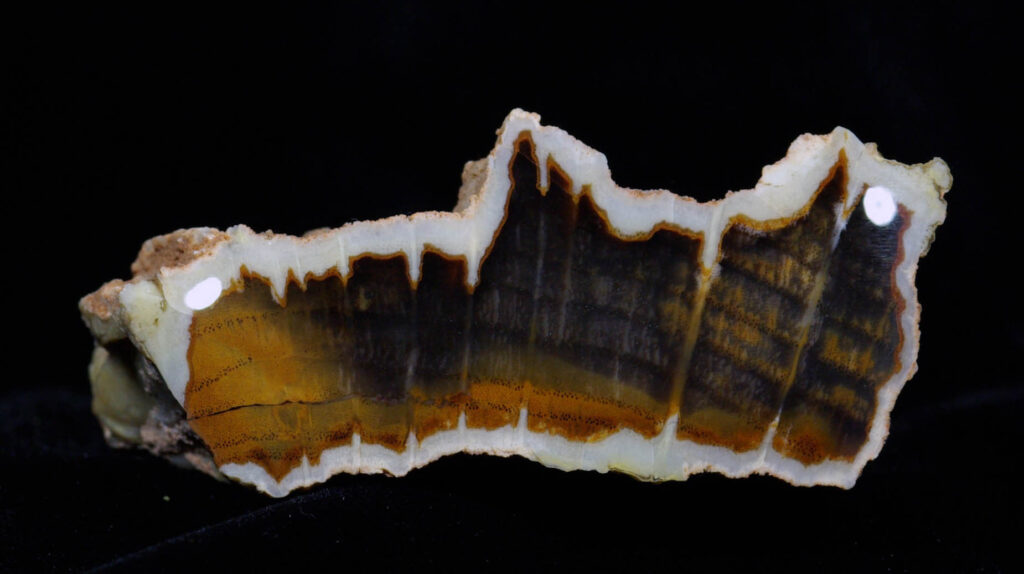
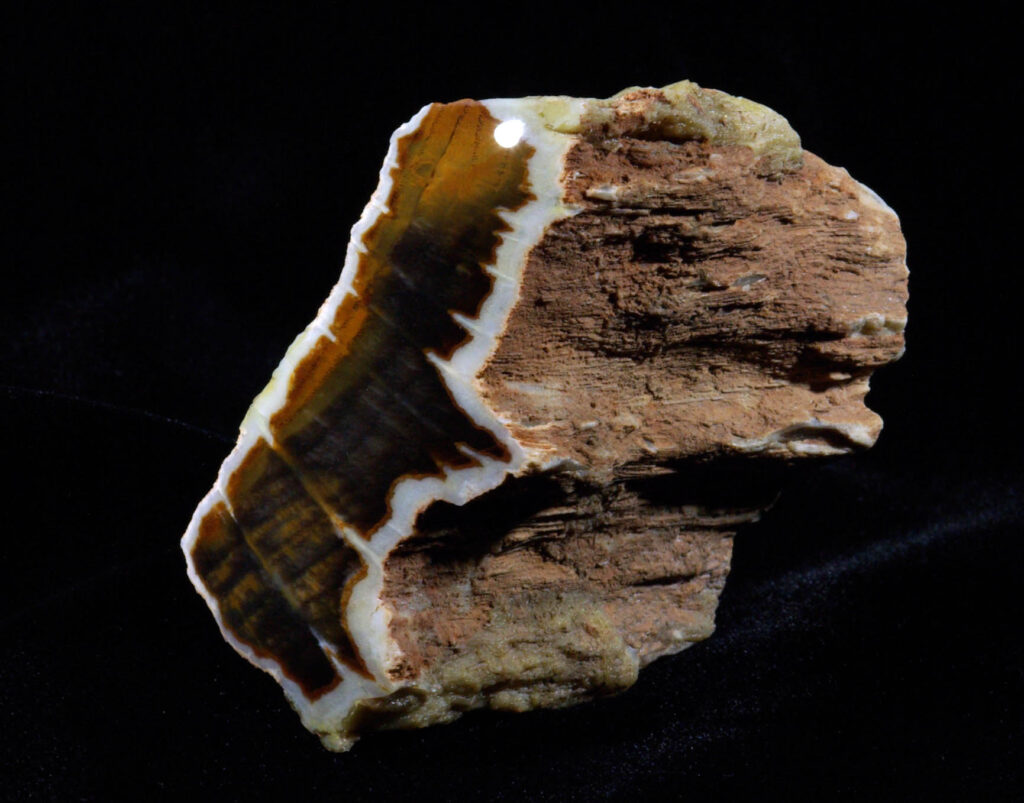
17. Grassy Mountain. Golden Oak. Malheur County, Succor Creek Formation. Miocene. Specimen round oak limb section, comprising a small portion of the full round, cut and polished on one end, otherwise all natural. Beautifully preserved oak structures. 6 by 3 cm mirror-polished face; 7 cm long; six ounces.
